

Piper Comanche Guide and Specs
Table of Contents
The Piper PA-24 Comanche is a single-engined, low wing, all-metal light aircraft, with retractable landing gear and either four or six seats. Piper designed and built the aircraft from 1956 until 1972, when the manufacturing plant was wiped out by a massive flood and production ceased.
There were a number of different models built during that time, most notably the Comanche 180, 250, and 260, although there were a few others too. Although it has not been produced since then, there are many Comanches still flying, and it is a popular and much-loved aircraft among many private pilots .
However, in recent years it has been to a large extent left behind by the better known Piper Cherokee models, which are still in production.
It should be noted that there is also a PA-30 “Twin Comanche”, which is a twin-engined aircraft. Having the same name for the two types has caused a certain amount of confusion! However, being a very different airplane, the PA-30 is outside the scope of this article.
Specifications – Piper PA-24 Comanche
Weights and dimensions.
- Max Take-Off Weight: 1,315 Kg / 2,899 lbs
- Max Landing Weight: 1,315 Kg / 2,899 lbs
- Max Payload: 622 Kg / 1,371 lbs
- Fuel Tank Capacity: 90 gallon / 341 liter
- Cabin Height: 1.19 metre / 3.90 feet
- Cabin Width: 1.14 metre / 3.74 feet
- Cabin Length: 2.7 metre / 8.86 feet
- Exterior Length: 7.62 metre / 25.00 feet
- Tail height: 2.29 metre / 7.51 feet
- Fuselage Diameter: 1.25 metre / 4.10 feet
- Wing Span / Rotor Diameter: 11 metre / 36.09 feet
Performance
- Engine: 1x Lycoming IO-540 Piston
- Power: 260 horsepower
- Max Cruise Speed: 169 knots / 313 Km/h
- Approach Speed (Vref): 55 knots
- Travel range: 1,064 Nautical Miles / 1,971 Kilometers
- Service Ceiling: 22,000 feet
- Rate of Climb: 1500 feet per minute / 7.62metre per second
- Take Off Distance: 430 metre / 1,410.74 feet
- Landing Distance: 370 metre / 1,213.90 feet
Since all Piper Comanches are now second hand, prices can vary immensely depending on age, model, condition, and sometimes just the luck of the draw! However, one expert source quotes a retail price for the Comanche 250 – the most popular and most common model – of between $37,000 and $46,000.
An aircraft with a turbocharged engine is likely to cost about $500 more, and some Comanche 250s sell for as much as $74,000. So there is a huge amount of variation in prices.
Performance and Handling
The early Comanche 180 had a 180-horsepower Lycoming O-360 engine and a 140 knot cruise speed. The Comanche 250, when it was produced, only cost a little more, but its 250 hp Lycoming O-540 engine meant that its cruise speed increased to 160 knots.
The result was that this quickly became the far more popular Comanche model, and by the end of production some 250 Comanche 250s had been sold.
The Comanche 250 is said to have good handling characteristics and to be very easy to fly. Most pilots find that after a few hours they feel very much at home in the cockpit.
However, it is important to know that Comanches are very responsive….or some might say they are slippery or twitchy. Speed reductions take some time and need to be well planned, which of course makes preparation for landing a little more difficult than it would be for slower or more staid aircraft.
The Pilot’s Operating Handbook recommends an approach speed of 71 knots, which may mean you need to lower flaps quickly and even do extra turns to slow down for landing, if you have been cruising at the Comanche’s high normal cruise speed.
Pilots do sometimes complain about the difficulty of landing a Comanche anyway. If you land even a little too fast, the airplane tends to float and float, while the speed slowly bleeds off. This could present problems on short runways, and most of the grumbling you hear about Comanches has to do with landings.
Close to the runway, those laminar-flow wings ride deep in ground effect. If you’re too fast, the airplane can seem to take forever to land and settle on the ground.
Forcing the aircraft on to the ground may be tempting, but it causes even more problems, and it is important to make sure you are at the correct attitude and airspeed as soon as you land. Overall, Comanches take careful handling and will not tolerate sloppy flying.
On the other hand, Comanches are very responsive, and pilots who take the time to learn how to handle them properly report that they are a sheer delight to fly. It seems that your either love them or hate them, and many pilots love them enough to hold on to them rather than buy any newer aircraft.
Maintenance
Since all Comanches are close to 50 years old at least, most models still flying are well-used, and aging issues keep up the cost of annual inspections. So owners do have to be willing to handle any maintenance issues regularly and invest in upgrades as and when necessary.
Perhaps for this reason, owners are sometimes less than enthusiastic about Comanche maintenance. On the plus side, they can be well maintained at lower cost than many other aircraft due to the now widespread use of generic parts.
There is a good supply of many of these commonly needed items. But on the minus side, although the aircraft is quite easy to maintain, and most mechanics should be able to do it, age cannot be ignored, and more work will probably need to be done than for newer aircraft.
So if you buy a Comanche, do understand that you will need to invest in regular maintenance and take good care of it, as you would with an aging relative, perhaps!
Modifications and Upgrades
Because the Comanche has been around so long, there are a very large number of modifications and upgrades available. Indeed, according to at least one source, probably no two Comanches are exactly alike today! You can modify your Comanche’s engine, the way it looks, the way it handles, and many other features.
For example, it is possible to fit the more powerful Lycoming O-540 engine into a Comanche 180 of 1960 or later. There is at least one report of this being done, although you might have to hunt around to find someone who could do this competently for you.
But the resulting aircraft would be essentially a Comanche 250 with a low gross weight, which might be very useful in some circumstances.
Also, the carbureted Lycoming O-540 found in the Comanche 250 may be upgraded to fuel injection. Cowls and propellors can also be modified, which might improve speed and performance, and also aid maintenance access to a large extent.
In summary, the Comanche’s list of ‘mods’ is long, and perhaps best accessed and any changes made through involvement with an expert. Such an expert can be found through the International Comanche Society (ICS), which owners say is an excellent resource for Comanche owners.
The organization also offers a technical support service to help with maintenance when needed. The list of modifiers and parts resources is long, and best accessed from involvement with the ICS and its members and publications.
Speaking of ICS, owners tell us the group is an exceptionally good resource for Comanche owners. It offers a magazine as well as other resources and can be reached at 405-491-0321 or via the website at www.comancheflyer.com .
Where to Find Replacement Parts
As mentioned above, the International Comanche Society is probably the best resource for all replacement parts. However, obtaining parts is rarely a problem anyway, as generic parts can be used in many instances.
According to one owner, “The landing gear and stabilator are unique to Comanches, and a knowledgeable mechanic is required. With a Comanche expert doing the maintenance, these systems have been trouble-free for me, but not cheap.
Other systems and accessories on the aircraft are common to many other airplanes. Parts are primarily through boutique suppliers and rarely a problem to source. The engine is reliable, smooth, easy to start and well supported.”
So obtaining replacement parts may require some research, but should not present any major problem.
Common Problems
As has been already mentioned, when it comes to handling the Comanche is easy to fly, but also slippery and easy to lose control of when on the approach to landing. Indeed, according to the Aircraft Owners and Pilots Association (AOPA) pilot error was the cause of roughly 75% of Comanche accidents, which is rather high.
Landing accidents seem to be most common, owing to the need for a slow approach speed and the tendency of the aircraft to float in ground effect when about to land.
Other problems generally relate to the age of the Comanche fleet, but these can be prevented by regular maintenance. Overall, it must be said that the Comanche is a remarkably safe aircraft, and has no notable problems or vices.
Insurance Options
As with all aircraft insurance, coverage comes in two parts – liability insurance for accidents affecting pilots, passengers, or others, and hull insurance to protect the aircraft itself. Hull insurance is optional, but most pilots do opt to include it, for obvious reasons.
As of February 2020, there were eight insurance companies quoting Piper Comanche insurance in the U.S. One of them quotes the following typical costs of Comanche insurance:-
“We consider qualified pilots to have at least a private license, IFR rating with 300 total hours, 25 retractable gear and 10 hours in the make/model.
For an annual policy with $1,000,000 in liability only coverage. Premium range for qualified pilots: $345-$495 per year. Premium range for less than qualified pilots (low-time/etc): $525-$730 per year.
For an annual policy with $1,000,000 in liability coverage and $80,000 in hull coverage Premium range for qualified pilots: $1,400-$1,758 per year. Premium range for less than qualified pilots (low-time/etc): $1,890-$2,120 per year.”
Note that unlike for some aircraft, insurance companies are likely to specify an IFR rating and experience on retractables, and charge extra if you don’t have these.
This is likely to be fairly typical, but pilots would be advised to shop around, particularly if they are low-time or have other issues making insurance more difficult than average.
But insuring your Comanche should not present any major or insurmountable issues.
Resale Value
Since the Piper Comanche is an old aircraft anyway, it is likely to keep its value, so long as it is well maintained by its owner. Indeed, Comanches are so popular that depreciation in value is likely to be minimal.
The values quoted above in the prices section are likely to remain the same, or at least broadly similar, when it comes to re-selling your Piper Comanche, so long as you have looked after it and maintained it well.
Owner Reviews
According to some sources, Piper Comanches are absolutely loved by their owners, who try to hang on to them long after they are too old and should have been sold. Our research tends to find that this is indeed the case. Here are some comments from owners….
“I was 63 years old when I got my pilot license. I am now 73. My first and only aircraft has been my Comanche 250, which spent most of its life in Texas. The first owner-an elderly 84-year-old pilot-had tears in his eyes as the plane left his sight….
I have since flown the Comanche 800 hours, flew to AirVenture at Oshkosh, Wisconsin, several times, flew around the United States and even flew along the New York Hudson River corridor and around the Statue of Liberty….Its a great aircraft and lots of fun.”
“I am the second owner of a 1966 B-model Comanche that I purchased in 1985 and have 4000 hours in the airplane. The Comanche 260 is fun to fly, fast, responsive and stable for IFR. It lands safely and usually smoothly, with the correct speed and an exaggerated flare. Strong crosswinds and short field landings are straightforward.”
“I just thought I’d write to let you know how much I like my Comanche 400.”
Similar Aircraft
The Piper Comanche competes with its more modern Piper relative, the Piper Cherokee series, in particular the Piper Arrow, which is also a retractable, as might be expected. Other similar aircraft are the Cessna 172, and also the Grumman AA-5 series and Beechcraft Musketeer, although none of these are retractables and they are significantly slower.
You might also want to consider the Piper PA-30 Twin Comanche, although to be honest this is not really similar except in name! And of course flying a twin is a whole other ballgame!
Clubs You Can Join
There is a club specifically for Comanche owners as mentioned above – the International Comanche Society or ICS .
According to owners, this group is an excellent organisation for Comanche owners. It offers a magazine as well as other resources, as well as a technical support service when you or your mechanic need some advice. Most Comanche pilots speak very highly of it.
Many owners also join the Piper Flyer Association , which is perhaps the best known club for all Piper owners. There is also a Piper Owner Society, which you can find at https://piperowner.org/.
There is a Piper Comanche group on Facebook, which describes itself as “THE group for those of us who love Piper Comanches”. You are also likely to find a number of local and regional clubs and groups, although perhaps not quite so many as for the more popular Piper Cherokee models.
Frequently Asked Questions
Question: i learned to fly on a piper tomahawk. will it be difficult for me to fly a piper comanche.
Answer: It should not be too difficult. But you will need quite a lot of extra training and practice, as the Commanche is much bigger than the two-seater Tomahawk , and also much faster. Please don’t attempt to fly it without this training.
Question: I am Considering Buying a Piper Comanche, or Perhaps a Piper Arrow. Which is Better?
Answer: it really comes down to personal preference. Both of these aircraft are single-engined retractables, and both are very popular.
The Comanche may require more maintenance, since all Comanche models are now quite old, and some people would say it is harder to fly. But your best bet would be to try both and see which you prefer.
Question: Will a Piper Comanche Cost a Lot to Maintain, as it is Such an Old Aircraft?
Answer: Being an old aircraft, it will require more maintenance than more modern types, and thus is likely to cost a bit more. But it will not be too horribly expensive, if you buy a well-maintained model in the first place.
Question: I Always Thought the Comanche Was a Twin Engined Aircraft. Is This not the Case?
Answer: There is indeed a Twin Comanche, as well as the single-engined type discussed here. Both are very different, and having the same name for them has caused some confusion, among people other than you. You will need to research the Twin Comanche separately if that is what interests you.
The Piper PA-24 Comanche is an old aircraft, but is still popular and much-loved by owners. It is easy to fly, but does have a few difficulties and quirks which mean pilots should be very careful and maybe undertake extra training before flying one for the first time.
But one advantage is that it comes with so many modifications and variants that you can almost design your Comanche the way you want it. If you are considering buying a single-engined light aircraft, the Comanche is certainly worth looking at in more detail. Like a lot of other pilots, you may find that you like it a lot!
Further Read:
- Piper Arrow Guide and Specs: Is It High Performance?
- Piper Tri-Pacer Guide and Specs: All You Need To Know
- Piper PA 32 Guide and Specs: Is It Easy To Fly The Work Horse?
- Piper J3 Cub Guide and Specs: Is It Worth It?
Research Citations
Aviation Consumer https://www.aviationconsumer.com/used-aircraft-guide/piper-comanche-2/
AOPA https://www.aopa.org/go-fly/aircraft-and-ownership/aircraft-fact-sheets/piper-comanche
Aerocorner https://aerocorner.com/aircraft/piper-pa-24-comanche/
International Comanche Society https://www.comancheflyers.com
BWI Fly https://bwifly.com/piper-comanche-insurance-cost/
- Latest Posts
- Bombardier Challenger 300 Guide and Specs - December 9, 2022
- Lancair Mako Guide and Specs - November 23, 2022
- Tucson Airport Guide - November 23, 2022
Leave a Comment Cancel Reply
Your email address will not be published. Required fields are marked *
Save my name, email, and website in this browser for the next time I comment.
- Manufacturers
- PIPER PA-24-180 Comanche
What feature of our site is most important to you?
- Aircraft for sale
- Operating Costs
- Performance Specs
- Used Aircraft Values
- Aircraft Sales and Accident History
1958 - 1964 PIPER PA-24-180 Comanche
Log in to compare." data-placement="left" data-activity="click on '+ add to compare piper pa-24-180 comanche'" > view comparison.
Single engine piston aircraft with retractable landing gear. The PA-24-180 Comanche seats up to 3 passengers plus 1 pilot.
View 31 PIPER PA-24 For Sale
PAPI™ Price Estimate
Market stats.

Performance specifications
Horsepower:
Best Cruise Speed:
Best Range (i):
Fuel Burn @ 75%:
Stall Speed:
Rate of climb:
Takeoff distance:
Landing distance:
Takeoff distance over 50ft obstacle:
Landing distance over 50ft obstacle:
Gross Weight:
Empty Weight:
Fuel capacity:
Ownership Costs 1958
Total cost of ownership:.
Total Fixed Cost:
Total Variable Cost:
Total Fixed Cost
Annual inspection cost:
Weather service:
Refurbishing and modernization:
Depreciation:
Total Variable Cost ( 115.1 Hrs ) Cost Per Hour = $97.58 Cost Per Mile = $0.70
Fuel cost per hour: (10.0 gallons/hr @ $5.40/gal)
Oil cost per hour:
Overhaul reserves:
Hourly maintenance:
Misc: landing, parking, supplies, catering, etc
Engine (x1)
Manufacturer:
Overhaul (HT):
Years before overhaul:
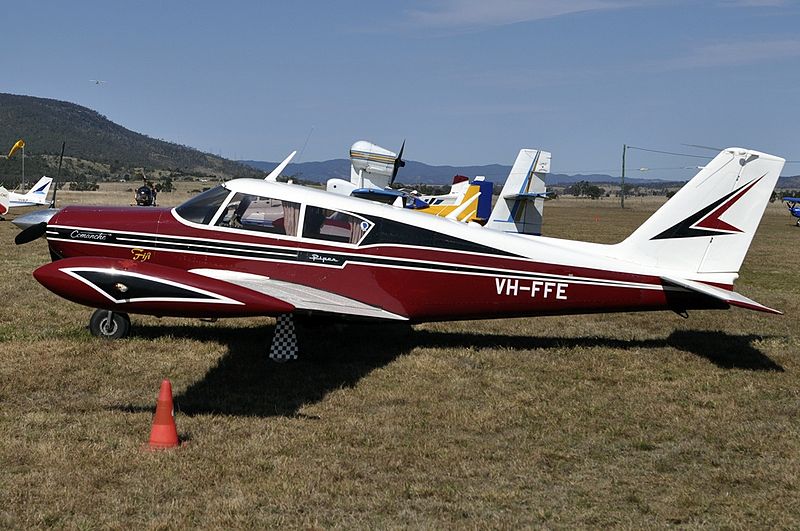
Also Consider
Mooney m20e chaparral (1974 - 1975).
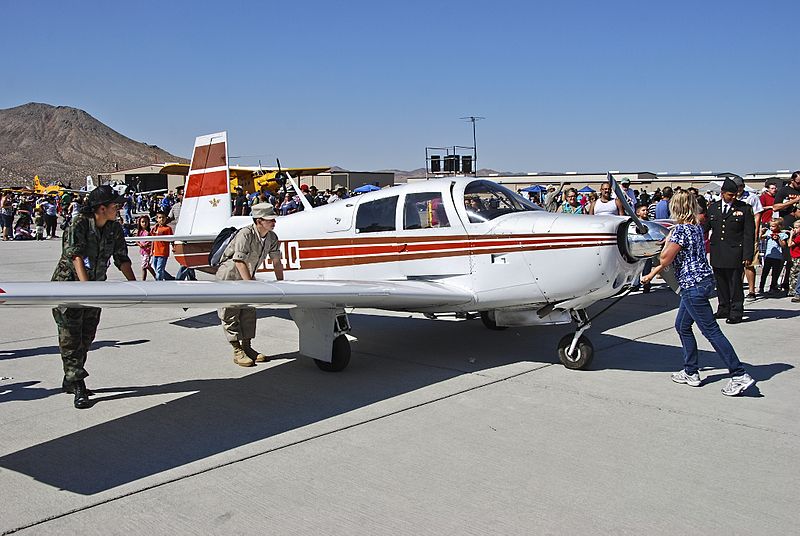
Typical Price: $82,757.00 Total Cost of Ownership: $17,596.92 Best Cruise: 160 KIAS ( 21 ) Best Range: 601 NM ( 199 ) Fuelburn: 12.3 GPH ( 2.3 )
Adjust ownership costs parameters
- Cost Per Mile
- Cost Per Hour
Leave Us Feedback PlanePhD is only as good as its community. Everyone wins if you share.
Please tell us: - Features that would be useful to you. - Aircraft data that you believe is inaccurate or have specific experiences. - Aircraft specific reviews and articles. Please send us your experiences on your aircraft. - Send us pictures of your plane. - Use this form or email to reach out to us: [email protected]
Thank you for contacting us!
One of our Planephd Experts will be in touch with you shortly.

- Brands/Models
- Buyer’s Guide
- Glass Cockpits
- Auto-Pilots
- Legacy Instruments
- Instruments
- Safety Systems
- Portable Electronics
- Modifications
- Maintenance
- Partnerships
- Pilot Courses
- Plane & Pilot 2024 Photo Contest
- Past Contests
- Aviation Education Training
- Proficiency
- Free Newsletter
Comanche 180
By Staff Updated February 22, 2016 Save Article
Related Stories

2017 Piper Archer DX

2017 Piper Archer

2017 Piper Matrix
Stay in touch with Plane & Pilot
America’s owner-flown aircraft enthusiasts and active-pilot resource, delivered to your inbox!
Save Your Favorites

Already have an account? Sign in
Save This Article
Contact | RisingUp Home
- Aircraft Specs
- Aviation Message Board
- FAA Regulations
- Aircraft Pictures
- Avation Links
- Practice FAA Tests
- Manufacturer List
- Piper Aircraft
- Advanced Search
Aircraft Performance Data
Piper pa-24-180 comanche - performance data.
Related Specs:
- PA-24-400 Comanche
- PA-24-C 260 Comanche
- PA-24-B-260
- PA-24-250 Comanche
Manufacturer Aeronca Aerostar American Champion American General Beechcraft Bellanca Cessna Commander EADS Socata Lake Luscombe Aircraft Maule Mooney Piper PZL Aircraft Model Search for aircraft meeting your performance criteria!
Copyright © 1998-2011 RisingUp Aviation . All rights reserved.

The Piper Comanche: The First Modern Piper
What is a Pilot?
The all-metal piper comanche brought piper aircraft into the post-war era.
The 250 horsepower Piper PA-24-260 Comanche is a four-seat, low wing airplane with retractable landing gear. As one of Piper’s first all-metal, ultra-aerodynamic airplanes furnished with a comfortable interior, it helped differentiate the company from its early style of slower tube-and-fabric aircraft. Because of the success of the Comanche, sleek, high-performance aircraft like the Piper Seneca and Saratoga were made possible. 3
The Piper Comanche features a semi-monocoque construction and laminar-flow wings, and would eventually become a pioneer in cowl-aerodynamics by the third installation of the PA-24-260, with the “Tiger Shark.” 3
Today, the Comanche is known for its performance, comfort, and impressive useful load, as well as its undeniable ramp appeal.
History of the Piper Comanche
The Piper PA-24 Comanche 180 first flew on May 24, 1956, the first of what would become one of Piper Aircraft’s most successful single-engine series. The Comanche 180 was introduced in 1957, and the PA-24-250 , the 250 HP version, followed soon after in 1958. Piper then skipped directly to the 400 HP PA-24-400 in 1964, before replacing their PA-24-250’s with PA-24-260 ’s as the standard in August of 1964. 3
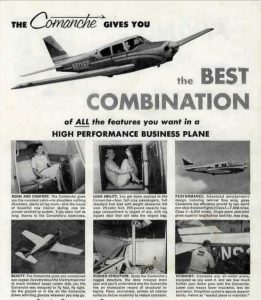
The Piper Comanche was marketed in the mid-1960’s as “The best combination of all the features you want in a high-performance business plane,” noting its useful load, economy (compared to other all-metal aircraft at the time), and speed. Though more PA-24-250’s were built and sold than the PA-24-260 3 , modern pilots believe that the 260 HP Lycoming makes the PA-24-260 the most fun and practical of the Comanche line.
Unfortunately, in 1972, torrential rains from Hurricane Agnes flooded a river near Piper’s Lock Haven, PA factory (the Great Susquehanna River Flood of 1972), forcing Piper to abandon production of the Comanche and Twin Comanche, as nearly all airframes, parts, and tooling were destroyed. Piper then focused on the production of the PA-34 Seneca and PA-28R-200 Arrow at its manufacturing plant in Vero Beach, Florida 3 .
General Characteristics of the Piper Comanche 6
The 260 HP Lycoming IO-540 (where the PA-24-260 got its designation) came standard with a constant speed two-blade propeller and retractable tricycle landing gear. It improved upon the PA-24-250’s design with better landing gear and single-fork main legs, which help to create less drag when retracted. It also dedicated itself to improving the interior, by way of better cabin-soundproofing, heating, and ventilation. A member of my flying club has flown in a Piper Comanche , and said she could hardly hear the engine at all! The optional auxiliary fuel system added an addition 30 gallons of fuel, increasing the range exponentially.
Performance Specifications of the Piper Comanche 4
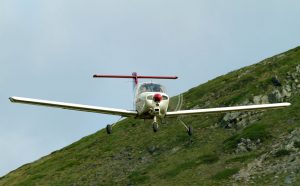
Piper Tomahawk: From ‘Traumahawk’ to the Perfect Day-Tripper
The Tomahawk is a unique looking two-seat single-engine low-wing cantilever monoplane with a T-tail, sitting on fixed tricycle landing gear , and pulled by a twin-blade propeller. It was originally introduced to the world as the ideal trainer, designed with CFI’s in mind. [Read More]
Piper Comanche 260 Variants 2
The Piper PA-24 Comanche had many variants, but the 260 HP Comanche only had three of importance: the PA-24-260B , PA-24-260C , and the turbo-normalized PA-24-260TC .
A total of 1,029 Piper PA-24-260 Comanche’s were sold; 38 of which had carbureted engines, whereas the rest used the 260 HP fuel-injected Lycoming IO-540 5 .
The Piper Comanche PA-24-260B
The PA-24-260B was in production between 1966 and 1968, and featured an additional six inches of overall length. However, though this model also had six seats compared to the originals four, the six inches of length weren’t added to the fuselage. Instead, they were added to a longer, pointer propeller spinner . The PA-24-260B also had an extra window on each side of the fuselage to provide a view for the two small seats in the rear (which took the place of the baggage area).
The Piper Comanche PA-24-260C
The PA-24-260C was introduced the year after the PA-24-260B left production, and was produced between 1969 and
1972. The 260C was the most visually unique variant, because it introduced the highly aerodynamic Tiger Shark cowling. The Tiger Shark cowling has a more dramatic taper toward the propeller (which is a three-blade instead of the two-blade both previous variants had), and featured two smaller cowl inlets to the sides of the spinner, instead of the wide opening that surrounded the spinner. The 260C also increased the gross weight to 3200, which brought the useful load up to 1,427- the best of all Comanche’s except the 400 HP model. The propeller shaft was extended to shift the center of gravity forward, balancing out any problems that might have come from an increased gross weight. The 260C kept the two rear seats and additional windows that the 260B introduced.
The Piper Comanche PA-24-260TC
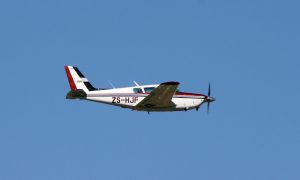
The PA-24-260TC was produced from 1970 to 1972 alongside the 260C, and featured a turbo-normalized Lycoming IO-540-R1A5 and dual Rayjay turbochargers , allowing it to hit 202 kts . (If you’re wondering, as I was, what the difference between turbocharged and turbo-normalized is, check out this article ! In short, turbo-normalized means that the engine will perform better at sea-level than a regular turbocharged engine would, as turbocharged engines are meant to perform better at high altitudes.) Only 26 260TC’s were built.
Modifications and Upgrades for the Piper Comanche 7
Most of the upgrades and modifications for the Comanche variants are for pilots who have the need… the need for speed. The aerodynamics of the airplane can be improved in many ways, some big, some small. In addition to speed, many of these modifications improve the aesthetics for those pilots who desire a more modern look and comfort.
The LoPresti Wholey Cowl
The LoPresti Wholey Cowl is available for the PA-24-260 and PA-24-260B (the 260C’s Tiger Shark cowling is already awesome), and is reported to improve cruise performance by as much as 15 mph (or 13 kts), which can really make a difference in those long range flights. The Wholey Cowl Mod is a low-drag, high induction system which costs upwards of $15,000.
Replacement Windows
The Comanche benefits greatly from replacement windows, but also can heat up the cockpit substantially in warmer weather. Any increase in window area increases the visibility, which is important, and if you get tinted glass, it’ll reduce the solar heating potential. You can even get a windscreen replacement which modifies the roof line by bringing it up over the pilots head for a little more visibility. You can buy the kit and install it yourself for $1,500.
Wing Tip Modifications 1
Some pilots find that the Comanche wingtips, which are round, look a little too “retro.” You can get them replaced with either downturned wingtips or upturned finlets, which both benefit the Comanche aerodynamically (in a small way), but are mainly for aesthetic value.
If you’d rather go for range than ramp appeal, you can invest in tiptanks, which add 30 gallons (15gal to each wing), increasing the range by a couple hundred nautical miles as well as a 200 lb gross increase. The tiptanks usually run somewhere around the $10,000 mark.
Piper Arrow: Continually Refining a Winning Design
Airplane manufacturers often find that one of their designs “sticks” to pilots, and they take that winning design and modify it, continually improving on the original design over decades of production. For Piper Aircraft , the PA-28 was it. [Read More]
Operating and Purchase Costs(AOPA)
Most likely because it’s a high performance complex aircraft, it’s not exactly cheap to insure a Piper Comanche. Generally, pilots are quoted around the $2,000-2,500/yr mark. Compared to many high performance aircraft, the Comanche isn’t too expensive, selling on the used market for anywhere between $36,000-$70,000 depending on modifications and condition. Considering they sold for $32-36,000 when they were first introduced in the mid-sixties to early seventies, it’s kind of surprising they’re not more expensive 1 .
Our flying club is hoping to add a Piper Comanche to our line up soon, so I wanted to take a closer look at the specifications and such. After doing this research, it seems like the perfect traveling plane, and with its high horsepower, it’ll perform better at altitude, which is important here in the Sierra Nevada Mountains. I personally think the regular 260 with speed and range modifications would be the way to go, because baggage area makes more sense to me practically than two extra seats. Many of the Piper Comanche’s available on the used market already come equipped with substantial upgrades and modifications, which makes it both easier on you, the prospective owner, and hypothetically less expensive.
*Featured image “ Edenvale Aerodrome – Gathering Of The Classics – 2007 ” taken by Ken Mist , used under license CC BY 2.0. *
References and Resources :
1 – Piper Comanche, Thomas A. Horne, AOPA, Retrieved 4-7-17
2 – Piper PA-24-260 “Comanche 260,” Skytamer, Retrieved 4-7-17
3 – Piper PA-24 Comanche, Wikipedia, Retrieved 7-28-17
4 – Piper PA-24-260 Performance Data, Rising Up Aviation, Retrieved 4-7-17
5 – Comanche 260 Series, Comanche Flyer, Retrieved 4-7-17
6 – Piper “Comanche,” Plane & Pilot Magazine, Retrieved 4-7-17
7 – Popular Piper Comanche Modifications, Piper Flyer Association, Retrieved 4-7-17
A Character-Building Night Flight

Modified Cessna 182s vs Stock

The Lake of Paradoxes

Pounding Rain, No Visibility, Turbulence, and an Airplane Fire

- Search forums
Follow along with the video below to see how to install our site as a web app on your home screen.
Note: This feature may not be available in some browsers.
- Controlled Airspace
- Flight Following
Is a Piper PA-24-180 Comanche under powered?
- Thread starter jd21476
- Start date Nov 24, 2019
Line Up and Wait
- Nov 24, 2019
I was looking at the Piper PA-24 Comanche series and I see that they made three engine variations. They have the 180hp, the 250hp and the 260hp....and actually I think a 400. Anyway, has anyone ever flown the 180hp version? Is it under powered or did it feel slow?
Doc Holliday
The 180 flies fine. About 135kts IIRC.
Ok, thanks
Ejection Handle Pulled
I don't remember the exact numbers, but the single Commanches, being very well built, tend to be a little heavier than you'd think. Hence, the higher Hp variants are the better choice. The 180 hp cruises just fine, but heavy take offs, especially in high density conditions need absolute attention and respect. Some of the props have AD's against then, and the gear has bungees that require regular replacement. Opinion, yes, very well built airplanes, but underpowered when mated with 180hp.
"Underpowered" is always in the eye of the operation you intend. I have at least a couple hundred hours in the 180 and about half that in the 250. The 180's are not speed demons, but they are perfectly reasonable airplanes if you know the limits (like any airplane), and decently efficient as well. It didn't do great on a 9000 DA day at COS, but few 180 hp airplanes do. Calling @ahypnoz ...
Filing Flight Plan
It is not any more or less underpowered than any other 180 horse airplane. I believe the gross weight on a Comanche 180 is 2550 lb. That was the same as an Archer 2. The people that have them love them. Is an early Bonanza that had a 185 underpowered compared to a 285 horsepower Bonanza?
hindsight2020
Final approach.
People conflate topics. As has been highlighted already, cruise speed is not the inflection point on the power discussion, imo. Power changes speed at the power of the cube root of the increase, once you move everything around to solve for the new speed. A 2550# version of a bench seat comanche on only 180HP... Yeah, I call that underpowered. Like 172RG underpowered (similar power loading). And before the tribe gets all bent outta shape, my Arrow is underpowered too, though it has better power loading than the 180hp offerings I've mentioned.
Right now I have a Grumman with the O-235 and its 108HP. It flies fine but is underpowered. If I buy another plane I dont want to be underpowered but the Comanche 180 is appealing because it tends toc ost leas than the 250
Pre-takeoff checklist
jd21476 said: Right now I have a Grumman with the O-235 and its 108HP. It flies fine but is underpowered. If I buy another plane I dont want to be underpowered but the Comanche 180 is appealing because it tends toc ost leas than the 250 Click to expand...
There's a place for all of these airplanes. Personally I have a 260, and I wouldn't be interested in the 180 but I'm telling you the people that have them like them, it works for them. But if you want the go power and the useful load, the 250 / 260 it's hard to beat. Don't worry about the difference in gas it all works out over the Long Haul and you can always throttle back and do what a 180 can do.
jd21476 said: I was looking at the Piper PA-24 Comanche series and I see that they made three engine variations. They have the 180hp, the 250hp and the 260hp....and actually I think a 400. Anyway, has anyone ever flown the 180hp version? Is it under powered or did it feel slow? Click to expand...

Taxi to Parking
Guy at our field had one. He sold it because it was a dog on takeoff. I went with a 250. I wouldn't do a 180 at full gross for the flying I do. 250, no problem. Also, unless it recently changed, insurance companies were putting a premium on the 180 vs the 250 because of the lack of power for the airframe. 11.2lbs/hp on the 250 (12 if you get the tip tank stc) 14.2lbs/hp on the 180
midwestpa24
I've flown both. The 180 flies just fine, and you wouldn't know what you are missing until you've flown the 250/260. You do have to watch your takeoff/climb performance numbers a little when fully loaded, but no worse than an Archer or Arrow. The 250/260, will fly with everything short of the kitchen sink. On the 180, I always flight planned for 140kts/9gph. For the 250 I use 155kts/14gph.
Whimpy.
- Nov 25, 2019
I assume it cant be much worse than my Grumman on takeoff and definitely cant be worse on the climb out.
midwestpa24 said: I've flown both. The 180 flies just fine, and you wouldn't know what you are missing until you've flown the 250/260. You do have to watch your takeoff/climb performance numbers a little when fully loaded, but no worse than an Archer or Arrow. The 250/260, will fly with everything short of the kitchen sink. On the 180, I always flight planned for 140kts/9gph. For the 250 I use 155kts/14gph. Click to expand...
schmookeeg said: I bet the 250 can also do 140kt/9gph if desired. Click to expand...
midwestpa24 said: Probably, but why? Click to expand...
I can do 138 to 140knots lean of peak 65% power setting 10.5 gallons per hour. It's useful on short flights if I'm in no particular hurry, with a 260
Pattern Altitude
Jmcmanna said: My Arrow can’t do 140kt on 9gph Click to expand...
lblandina said: I can do 138 to 140knots lean of peak 65% power setting 10.5 gallons per hour. It's useful on short flights if I'm in no particular hurry, with a 260 Click to expand...
The Comanche 180 is still a nice plane but may seem underpowered due to all of its big brothers. After flying my 250 and regularly seeing 1500+ft/min, pretty much any 180hp airplane will feel underpowered in the climb. Fuel burn isn’t a big difference either. At 160kts (speed mods) above 8000ft and 13.5gph equals 11.85NM per gallon vs 12.85NM per gallon for a 180’s 135kts @ 10.5gph.
Attachments

- Nov 26, 2019
jd21476 said: I assume it cant be much worse than my Grumman on takeoff and definitely cant be worse on the climb out. Click to expand...
Kristin said: A 180 Comanche is no worse on takeoff than an Arrow. It carries more on less fuel than an Arrow. The 180 is particularly strong as it was actually designed to an ultimately load of 7.5 G's and not the required 5.7 G's. That is why Piper could keep upping the engine and the gross weight. The 180 Comanche is also the nicest flying and nicest landing of the Comanches. It is really may favorite single Comanche. That being said, if I lived out west and wanted to do high and hot takeoffs and criss-cross the mountains, I would go for the higher horsepower versions. Here in the flats lands of Minnesota, I would be pretty happy with the 180, unless I felt the need to regularly carry four, in which case I want the higher useful load of the 250/260. Click to expand...
GRG55 said: So you did move to Minnisnowta from Alaska. Congrats on the new job! Click to expand...
Kristin said: Sad to leave Alaska but there are more opportunities down here. Click to expand...
GRG55 said: Well at least you can keep the snowmobile. Click to expand...
Kristin said: Where I was in Alaska a snowmobile was useless. No snow! Click to expand...
Clip4 said: I am certain it can, but replacing cylinders with burnt exhaust valves might defeat the purpose. Click to expand...
Chip Sylverne
I've flown both, and both are great flying airplanes. I bought a 250 because no matter how hard you push the black knob of a 180, you'll never get 250 horses out of it to climb over that tree, or out of that ice. However, you can throttle back a 250 to get 180 performance. Landing is a matter of speed control in each. Both can be landed very well, or very poorly.
That low of a power setting you can about run the mixture anywhere you want and not hurt the engine.
Piper PA-24 Comanche
The Piper PA-24 Comanche is an American single-engine, low-wing, all-metal monoplane of semimonocoque construction with tricycle retractable landing gear and four or six seats. [2] The Comanche was designed and built by Piper Aircraft and first flew on May 24, 1956. Together with the PA-30 and PA-39 Twin Comanches , it made up the core of Piper's lineup until 1972, when the production lines for both aircraft were destroyed in the 1972 Lock Haven flood .
Design and development
Comanche 180, comanche 250, comanche 260, comanche 400.
- Twin Comanche
World records
Kenneth walker, oldest circumnavigator, specifications (pa-24-260c), external links.

Two prototypes were built in 1956, with the first being completed by June 20, 1956. [2] The first production aircraft, powered by a 180 hp (134 kW) Lycoming O-360-A1A engine, first flew on October 21, 1957. In 1958, it was joined by a higher-powered PA-24-250 with a 250 hp (186 kW) Lycoming O-540-A1A5 engine; this model was originally to be known as the PA-26, but Piper decided to keep the PA-24 designation. [2] [3]
In 1964, the 400 hp (298 kW) PA-24-400 was introduced. [1] The following year, the PA-24-250 was superseded by the PA-24-260, featuring the Lycoming IO-540D or E engine of 260 hp (194 kW) . A turbocharged version using a Rajay turbocharger was introduced in 1970. [4]
Production of the Comanche ended in 1972, when torrential rains from Hurricane Agnes caused the great Susquehanna River flood of 1972 , flooding the manufacturing plant and destroying airframes, parts, and much of the tooling necessary for production. Rather than rebuild the tooling, Piper chose to abandon production of the Comanche and Twin Comanche and continue with two newer designs already in production at Piper's other plant in Vero Beach, Florida - the PA-28R-200 Arrow and the twin-engined PA-34 Seneca . [5]
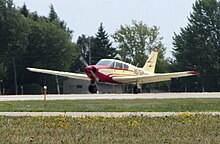
The original version of the Comanche was the PA-24, which featured a carbureted 180 hp (134 kW) Lycoming O-360-A1A engine, swept tail, laminar flow airfoil, and all-flying stabilator .
The standard fuel capacity of the PA-24-180 was 60 US gallons (230 L) . The flaps were manually actuated, controlled by the same Johnson bar actuator as the Piper Cherokee . The aircraft specifications were for cruise speeds of 116 to 139 knots (215 to 257 km/h) and fuel burns between 7.5 and 10.5 gallons per hour (28 and 40 L/h) at 55 and 75% power settings, respectively. Full-fuel payload with standard fuel was 715 lb (324 kg) , with a gross weight of 2,550 lb (1,160 kg) and range with 45-minute reserve of 700 nmi (1,300 km; 810 mi) . [ citation needed ]
When new, standard, typically equipped Comanche 180s sold between $17,850 (1958) and $21,580 (1964). A total of 1,143 were built. [ citation needed ]
In 1958, Piper introduced a 250 hp (190 kW) version using a Lycoming O-540 engine, giving the PA-24-250 Comanche a top cruise speed of 160 kn (180 mph; 300 km/h) . Most 250s had carbureted Lycoming O-540-AIA5 engines, but a small number were fitted out with fuel-injected versions of the same engine. Early Comanche 250s had manually operated flaps and carried 60 US gal (230 L) of fuel. Auxiliary fuel tanks ( 90 US gal (340 L) total) became available in 1961. Electrically actuated flaps were made standard with the 1962 model year. [ citation needed ]

Four 260-horsepower (194 kW) versions of the Comanche were introduced beginning in 1965. They were:
- PA-24-260 (1965)
- PA-24-260B (1966 to 1968)
- PA-24-260C (1969 to 1972)
- PA-24-260TC (Turbocharged 260C) (1970 to 1972)
A total of 1,029 airplanes were sold from the Comanche 260 line, including the 260TC.
The 260 had an empty weight around 1,700 lb (770 kg) and a maximum gross weight of 2,900 lb (1,300 kg) . It had four seats, and a 90-US-gallon (340 L) -capacity auxiliary fuel system was available as an option. Cruise speed was advertised as 142–161 kn (263–298 km/h; 163–185 mph) with fuel burn of 10 to 14 gal/h (38 to 53 L/h) .
The 260B had an overall length 6 in (150 mm) more than the previous models due to a longer propeller spinner, not a longer fuselage. The 260B had a third side window and a provision for six seats. The fifth and sixth seats take up the entire baggage area and seat smaller adults, placarded to a total weight of 250 lb (110 kg) . Typical empty weight was 1,728 lb (784 kg) and gross weight was 3,100 lb (1,400 kg) . Fuel burn was 11 to 14 gal/h (42 to 53 L/h) and advertised speed was 140–160 kn (260–300 km/h; 160–180 mph) .
The 260C introduced a new "Tiger Shark" cowling, maximum gross weight of 3,200 lb (1,500 kg) , cowl flaps, and an aileron-rudder interconnect. Cruise speed was advertised as 150–161 kn (278–298 km/h; 173–185 mph) with fuel flow of 12.5 to 14.1 gal/h (47 to 53 L/h) . To prevent possible aft center-of-gravity problems due to the increased gross weight and its fifth and sixth seats, the propeller shaft was extended. This moved the center of gravity slightly forward. With a useful load of 1,427 lb (647 kg) , it has the largest payload of all of the Comanches except the 400. Often mistaken on the ramp for the 400 model, the slightly longer cowling includes a distinctively longer nose gear door, as compared to the B models and older versions.
Starting in 1970, Piper offered a turbo-normalized variant of the PA-24-260 known as the 260TC with a Lycoming IO-540-R1A5 engine and dual Rajay turbochargers. Twenty-six were produced between 1970 and 1972. Advertised by Piper as a "second throttle", the turbochargers are controlled using a manual wastegate assembly that places an additional handle labeled "boost" next to the throttle handle in the cockpit, effectively creating a secondary throttle. The TC model is certified for flight to 25,000 ft (7,600 m) , with an advertised turbo critical altitude of 20,000 ft (6,100 m) , giving a maximum true airspeed of 223 mph (194 kn; 359 km/h) . [6]
In 1967, one aircraft was modified with a 300 hp (224 kW) Lycoming engine for trials. It did not enter production. [2]
Two prototype aircraft were built in 1961. They were standard Comanche airframes, but had 380 hp (283 kW) Lycoming IO-720-A1A engines with a three-bladed propeller. The design was modified with an even larger 400 hp (298 kW) engine and produced as the PA-24-400. [7]
The PA-24-400 Comanche 400 [8] was produced from 1964 to 1966. [1] Only 148 PA-24-400s were built.
The Comanche 400 is powered by the 400 hp (298 kW) , horizontally opposed , eight-cylinder Lycoming IO-720 engine, developed specifically for the model. [9] Cooling problems have happened with the rear cylinders.

The Comanche 400 has a three-bladed propeller and carries 100 US gal (380 L) of fuel, or 130 US gal (490 L) with optional extended tanks. Fuel burn was advertised as 16 to 23 gal/h (61 to 87 L/h) , at 55-75% power. The high fuel burn means that it is expensive to operate. The 400 had a typical empty weight of 2,110 lb (960 kg) and a maximum gross weight of 3,600 lb (1,600 kg) .
Book speeds for the PA-24-400 included a cruising speed of 185 kn (343 km/h; 213 mph) and a top speed of 194 kn (359 km/h; 223 mph) . [10]
While identical in planform to other PA-24 models, the 400 is structurally strengthened, primarily in the tail, with an extra nose rib in the stabilator and the vertical fin. The stabilator, vertical fin, and rudder of the 400 share virtually no common parts with the 180, 250, or 260 hp (190 kW) Comanches.

In 1967, a single Comanche was modified by Swearingen with a pressurized cabin. The prototype, powered by a 260 hp (190 kW) Lycoming O-540 engine and equipped with Twin Comanche landing gear, was designated the PA-33. [11] First flown on March 11, 1967, the prototype later crashed on takeoff in May 1967 and the project was cancelled. [11]
In June 1959, Max Conrad flew a Comanche 250 on a record-breaking distance flight in Fédération Aéronautique Internationale C1-D Class, for aircraft from 3,858 lb (1,750 kg) to less than 6,614 lb (3,000 kg) . Having removed the interior seats and replaced them with fuel tanks, Conrad flew nonstop from Casablanca , Morocco , to Los Angeles , a distance of 7,668 mi (12,340 km) . When the aircraft took off from Casablanca, it was heavily overloaded and just cleared the airport fence. [12] The Comanche 250 Max Conrad flew for this flight is now located in the museum at the Liberal, Kansas , airport.
On November 24–26, 1959, Conrad flew a Comanche 180 on a distance record flight in FAI C1-C Class for aircraft taking off at weights from 2,204 lb (1,000 kg) to less than 3,858 lb (1,750 kg) that still stands: Casablanca to El Paso, Texas , 6,966 mi (11,211 km) nonstop, a distance of 6,967 mi (6,054 nmi; 11,212 km) , in 56 hours 26 minutes. [12] [13] He set a closed-circuit distance record in the same aircraft on July 4–6 November 1960, flying 6,921 mi (6,014 nmi; 11,138 km) . [13]
On 14 May 1962, Kenneth Walker arrived in Brisbane, Australia , in a PA-24-250 on a delivery flight from San Francisco . Walker's flight was the first ever solo single-engine crossing of the Pacific, and the third solo crossing from the US to Australia. From Brisbane, Walker continued south to deliver the Comanche to the Royal Newcastle Aero Club at Maitland, New South Wales , Australia. [14]

In July 1964, Henry Ohye, flying a 1961 PA-24-250, made the first successful trans-Pacific flight from the United States to Japan in a single-engined aircraft. He flew from Los Angeles to Tokyo with stops in Honolulu , Midway , Wake , Guam , and Okinawa . [15] [16]
A 1966 Comanche 260B, named Myth Too and registered as G-ATOY, was owned by English aviator Sheila Scott . The aircraft, flown by Scott, holds 90 world-class light aviation records. It is on public display at the National Museum of Flight , Scotland. [17]
The circumnavigation by the oldest pilot on record in 1994 was made by Fred Lasby at age 82 in a Comanche 260B. [18]
- The 1963 Camden PA-24 crash – On March 5, 1963, country music singers Patsy Cline , Lloyd "Cowboy" Copas , and Hawkshaw Hawkins were on board a Comanche owned and piloted by Cline's manager, Randy Hughes, when it crashed in deteriorating weather near Camden, Tennessee , killing all on board. [19]
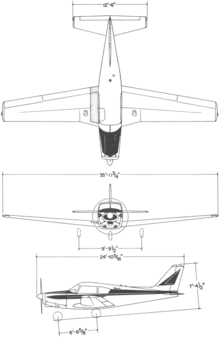
Data from Jane's All the World's Aircraft 1971–72 [20]
General characteristics
- Capacity: 3–5 passengers
- Length: 25 ft 0 in (7.62 m)
- Wingspan: 36 ft 0 in (10.97 m)
- Height: 7 ft 6 in (2.29 m)
- Wing area: 178 sq ft (16.5 m 2 )
- Aspect ratio: 7.28:1
- Airfoil : NACA64 2 A215
- Empty weight: 1,773 lb (804 kg)
- Max takeoff weight: 3,200 lb (1,451 kg)
- Fuel capacity: 60 US gal (50 imp gal; 230 L) normal, additional 30 US gal (25 imp gal; 110 L) in optional auxiliary tanks
- Powerplant: 1 × Lycoming IO-540 air-cooled six-cylinder horizontally-opposed engine, 260 hp (190 kW)
- Propellers: 2-bladed Hartzell HC82XK1D metal constant-speed propeller , 6 ft 5 in (1.96 m) diameter
Performance
- Maximum speed: 195 mph (314 km/h, 169 kn) at sea level
- Cruise speed: 185 mph (298 km/h, 161 kn) at 6,300 ft (1,900 m) (max. cruise, 75% power)
- Never exceed speed : 227 mph (365 km/h, 197 kn)
- Range: 1,225 mi (1,971 km, 1,064 nmi) at 10,500 ft (3,200 m) (auxiliary fuel tanks, 65% power)
- Service ceiling: 19,500 ft (5,900 m)
- Rate of climb: 1,320 ft/min (6.7 m/s)
- Takeoff run to 50 ft (15 m): 1,400 ft (430 m)
- Landing run from 50 ft (15 m): 1,200 ft (370 m)
Related Research Articles

The Piper PA-28 Cherokee is a family of two-seat or four-seat light aircraft built by Piper Aircraft and designed for flight training, air taxi and personal use. The PA-28 family of aircraft comprises all-metal, unpressurized, single piston-engined airplanes with low-mounted wings and tricycle landing gear. They have a single door on the right side, which is entered by stepping on the wing.

The Piper PA-46 Malibu and Matrix , now known as the M-Class , are a family of American light aircraft manufactured by Piper Aircraft of Vero Beach, Florida. The aircraft is powered by a single engine and has the capacity for one pilot and five passengers. Early Malibus were all piston-engined, but a turboprop version, introduced as the Malibu Meridian but now called the M500, is also available. Currently, Piper offers the M350, M500, and M600 in the PA-46 family.

The Piper PA-15 Vagabond and PA-17 Vagabond are both two-seat, high-wing, conventional gear light aircraft that were designed for personal use and for flight training and built by Piper Aircraft starting in 1948.

The PA-25 Pawnee is an agricultural aircraft produced by Piper Aircraft between 1959 and 1981. It remains a widely used aircraft in agricultural spraying and is also used as a tow plane, or tug, for launching gliders or for towing banners. In 1988, the design rights and support responsibility were sold to Latino Americana de Aviación of Argentina.

The Piper PA-44 Seminole is an American twin-engined light aircraft manufactured by Piper Aircraft.

The Piper J-5 Cub Cruiser was a larger, more powerful version of the basic Piper J-3 Cub. It was designed just two years after the J-3 Cub, and differed by having a wider fuselage with the pilot sitting in the front seat and two passengers sitting in the rear seat. Equipped with a 75-hp Continental engine the plane's cruising speed was 75 mph. Though officially a three-seater, it would be more accurately described as a "two-and-a-half-seater", as two adults would find themselves quite cramped in the wider rear seat. The Cruiser sold for $1,798 when it was first designed.

The Embraer EMB 202 Ipanema is a Brazilian agricultural aircraft used for aerial application, particularly crop dusting. It is produced by Indústria Aeronáutica Neiva, a subsidiary of Embraer located in Botucatu, Brazil. The latest version of this aircraft is the first ethanol-powered fixed-wing aircraft, which could give it an economical advantage over the gasoline version. The aircraft is widely employed in Brazil, having market share of about 80%, and the 1,000th delivery was completed on 15 March 2005. Besides aircraft, alcohol-conversion kits for gasoline-powered Ipanemas are also sold.
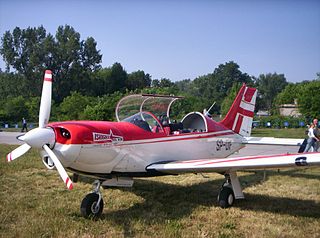
PZL M26 Iskierka or M26 Airwolf is a Polish trainer and aerobatic aircraft, designed at WSK PZL-Mielec.

The Bellanca Viking and Super Viking are a series of single-engine, four-seat, high performance, retractable gear aircraft manufactured in the USA during the 1960s and 1970s. The aircraft developed through modifications of classic designs by the aviation pioneer Giuseppe Bellanca. A total of 1,356 Vikings have been produced with most production between 1968 and 1975.

The Piper PA-12 Super Cruiser is an American three-seat, high wing, single-engine conventional landing gear-equipped light aircraft that was produced by Piper Aircraft between 1946-48. The PA-12 was an upgraded and redesignated Piper J-5.

The Piper PA-36 Pawnee Brave is a 1970s American single-engined, low-wing, propeller-driven agricultural plane built by Piper Aircraft.
The Piper PA-8 Skycycle was a 1940s American single-seat light aircraft designed and built by Piper Aircraft at their Lock Haven, Pennsylvania plant. Towards the end of 1944 Piper announced a number of aircraft it intended to build after the war. One of these was the PWA-8 . An aerodynamic test aircraft was built with the name Cub Cycle and it first flew on 27 August 1944 with a small two–cylinder Franklin engine. The Franklin engine was replaced by a four–cylinder Continental A-40-3 of 37 hp (28 kW); the aircraft first flew with the Continental engine on 12 September 1944. The Skycycle was a fabric-covered mid-wing single-engined single-seat monoplane with a tailwheel landing gear. The fuselage was produced using an auxiliary belly fuel tank as used on the F4U Corsair. The Cub Cycle was scrapped and a similar but new aircraft was built with the name Skycycle , which first flew on 29 January 1945 using the same Continental engine as the Cub Cycle. The aircraft was further modified in 1945 with a four-cylinder 55 hp (41 kW) Lycoming O-145-A2 engine and designated the PA-8 Skycycle . No further examples were built.
The Piper PA-6 Sky Sedan was a 1940s American four-seat light aircraft designed and built in prototype form by Piper Aircraft at its Lock Haven, Pennsylvania, factory.

The Jeffair Barracuda is a high-performance sporting monoplane that was developed in the United States in the 1970s and is marketed for homebuilding. Designed and built by Geoffrey Siers, the prototype won the prize for "Most Outstanding New Design" at the EAA Fly-in in 1976. It was a low-wing cantilever monoplane of wooden construction with retractable tricycle undercarriage and side-by-side seating for two. Around 150 sets of plans had sold by 1977.

The Piper PA-35 Pocono was an American 16/18 seat commuter airliner developed by Piper in the late 1960s. Only one aircraft was built and the design was not developed.
The Hongdu N-5 ,, originally known as the Nanchang N-5 , is a Chinese agricultural aircraft. First flown in 1989, and entering into production in 1992, the N-5 is a single-engined low-wing monoplane, and is available in versions powered by a piston engine or a turboprop.

The Ravin 500 is a South African amateur-built aircraft, designed and produced by Ravin Aircraft of Pretoria. The aircraft first flew on 15 September 2002 and is supplied as a kit for amateur construction or as a complete ready-to-fly aircraft.
The Sea Storm is an Italian homebuilt amphibious flying boat that was designed and produced by Storm Aircraft of Sabaudia. Storm Aircraft was originally called SG Aviation srl . When it was available the aircraft was supplied as a kit for amateur construction.
The Tech Aero TR 200 is a French homebuilt aerobatic aircraft that was designed and produced by Tech Aero of Glisolles, first flown in August 1988. When it was available the aircraft was supplied as a kit for amateur construction.

The Warner Revolution II , also marketed as the Space Walker II , is an American homebuilt aircraft that was designed and produced by Warner Aerocraft of Seminole, Florida. When it was available the aircraft was supplied as a kit or in the form of plans for amateur construction.
- 1 2 3 4 Peperell & Smith 1987 , pp. .105–110
- ↑ The PA-26 was later used as a designation for the Comanche 400, although it also retained the PA-24 designation for marketing.
- ↑ Taylor, John WR, editor: Jane's Light Aircraft , page 165. Jane's Publishing Company, 1982. ISBN 0-7106-0195-6
- ↑ "The Piper Aircraft Corporation, out of its Lock Haven, Pennsylv" . Retrieved July 26, 2013 .
- ↑ Killough, Douglas L. (1996). Pilot's Operating Handbook Piper PA-24-260C . Austin, Texas: Aircraft Publications. pp. numerous.
- ↑ Peperell & Smith 1987 , pp. 111–112
- ↑ Federal Aviation Administration (August 2006). "PA-24-400 Type Certificate" . Retrieved November 30, 2007 .
- ↑ Lycoming Engines (n.d.). "Lycoming IO-720" . Retrieved December 19, 2008 .
- ↑ Demand Media (2008). "The Piper PA-24 Comanche" . Retrieved December 20, 2008 .
- 1 2 Peperell & Smith 1987 , p. 225
- 1 2 Meunier, Claude (December 2007). "Max Conrad" . Archived from the original on November 23, 2008 . Retrieved August 15, 2009 .
- 1 2 Taylor 1962 , p. 263
- ↑ "First Solo Single-Engined Crossing of the South Pacific" . Pacific Islands Monthly . XXXII (11): 139. June 1, 1962.
- ↑ "Trans-Pacific Flier Returns on Airliner". Los Angeles Times . October 5, 1964.
- ↑ AWA Airways : 6. Summer 2012. {{ cite journal }} : Missing or empty | title= ( help )
- ↑ "National Museum of Flight Scotland - Our aircraft" (PDF) . National Museums of Scotland . Archived from the original (PDF) on August 6, 2009 . Retrieved July 5, 2009 .
- ↑ "Around the World in a Comanche 260B" . Comanche Flyer . Vol. 31, no. 3. March 2004. p. 34.
- ↑ Anderson, Sherry (January 2001). "Patsy Cline" . Archived from the original on September 27, 2008 . Retrieved October 9, 2008 .
- ↑ Taylor 1971 , pp. 381–382
- Peperell, Roger W; Smith, Colin M. (1987). Piper Aircraft and their forerunners . Tonbridge, Kent, England: Air-Britain . ISBN 0-85130-149-5 .
- Taylor, John W. R. (1962). Jane's All the World's Aircraft 1962–63 . London: Sampson Low, Marston & Company, Ltd.
- Taylor, John W. R. , ed. (1971). Jane's All The World's Aircraft 1971-72 . London: Sampson Low. ISBN 0-354-00094-2 .
- Cherokee Cruiser
- Cherokee Pathfinder
- Cherokee Six
- Cherokee Warrior
- Cub Cruiser
- Cub Special
- Cub Prospector
- Family Cruiser
- Flite Liner
- Grasshopper
- Pawnee Brave
- Pilot 100/i100
- Post War Airplane 1
- Post War Airplane 6
- Post War Airplane 8
- Super Cruiser
- Twin Stinson
- Turbo Arrow
- Turbo Dakota
- Vagabond Deluxe
- Vagabond Trainer
- Western Cub
- The A.V. Club
- The Takeout
- The Inventory
Piper PA-24-250 Comanche: The Jalopnik Airplane Review
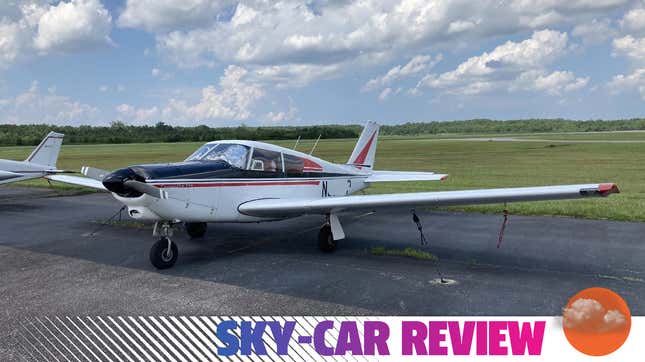
The PA-24-250 Comanche was Piper’s shot at the high performance, retractable (landing gear), piston single (single piston engine) market. It was also the only light civil aircraft to come with four, six, and eight-cylinder options from the factory. It’s an important airplane, in its own way, and today we’re going to review it
( Editor’s Note: We got an email from a pilot who wanted to write reviews of small aircraft. Since none of us are pilots, and this seemed like a fun thing to do, we figured why the hell not? We fact-checked as best we could, at any rate. So this is the first of what may become a series of sky-car reviews.)
The Comanche’s Backstory
In the late 1950s through the 1960s, while the Big Three automakers were busy competing with higher-performance cars to sell to public, the Big Three of general aviation were dreaming up faster and more powerful planes to dominate the skies.
Beechcraft, Cessna, and Piper had each been enjoying successes since the end of World War II, but the demand for faster personal aircraft and availability of cheap leaded fuel in the ensuing decades drove each of them to develop four-seat airplanes with larger engines and retractable landing gear.
Beechcraft was the first out of the gate, originally selling the 180 horsepower Bonanza in 1947. It had a sexy low-wing design and ruddervators . By 1956, Beech’s fork-tailed sensation had 225 HP and a claimed cruise speed of over 180 mph. Like a sports car for the skies, it was known for its nimble and satisfying handling, build quality, and propensity to kill pilots that overstepped their (or the airplane’s) limits.

At the time, Piper’s most successful aircraft was the Cub, a wood and fabric taildragger with 65 HP and a blazing maximum cruise of 85 mph. To compete, Piper would need to break out the drawing paper and start over. What design elements did they use? Laminar flow wing (just like the P-51 Mustang!) and retractable landing gear. It also had a spacious and aerodynamic four-seat cabin... and a weak 180 HP four-cylinder engine. Oops.
While it was faster than fixed gear airplanes, Piper realized it had brought sticks to a gunfight with the Comanche 180, and it just couldn’t compete with the Bonanza.
In 1958 it released the Comanche 250. Powered by a 540 cubic-inch Lycoming flat-six, the 250 HP version of the Comanche finally gave performance that could rival the Beech, and at a lower price. The better climb rate, cruise speed, and useful load of the 250 made it much more popular than the 180 and pushed Piper to go even further.
Using the deeply scientific formula of more engine = more better, Piper followed the muscle car trend and threw eight cylinders under the hood. In this case, a 720 cubic-inch fuel injected flat-eight with 400 HP at 2,650 RPM. With a 1,600 FPM rate of climb and cruise speed over 210 mph, the massive engine gave good performance, but was also the airplane’s biggest flaw.
Fuel burns of 20-23 gallons per hour scared off many aspiring owners, and like a cheap AMG Mercedes, engine work could easily cost more than the value of the plane itself after a few years. Piper dropped the 400 after 2 years and, just like Hal and Lois Wilkerson , focused on making improvements to the better balanced middle child of the family.
Adding fuel injection bumped power to 260, and adding a window plus removing a cabin wall allowed fifth and sixth child-size seats on the 260B and 260C variants. Sales never did catch the Bonanza, and the Comanche was proving expensive to build. In 1972, the Lock Haven factory where the Comanche was built flooded, and Piper decided to focus on the slower and cheaper to build Cherokee line.
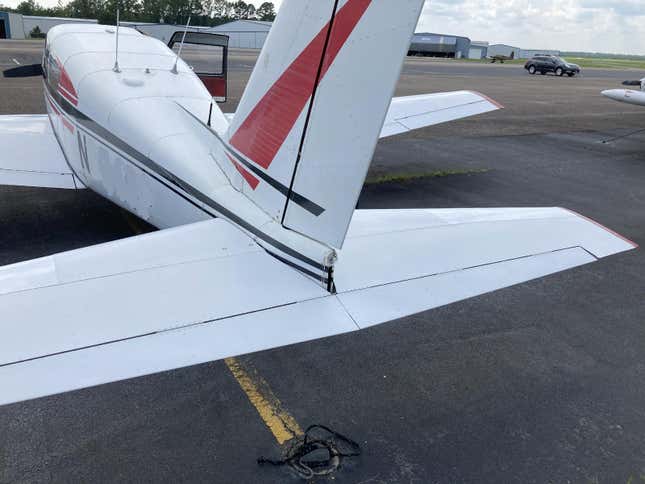
The Comanche Today
Walking up to the Comanche 250 today, one of the first things you notice is that it sits low to the ground with a nose-up attitude. The low, smooth wing and all moving stabilator give the impression of low drag, but the open front cowling and non-filleted wing to fuselage transition give the aircraft away as an older design. Entry into the cabin is via one door on the passenger side, requiring a quick step up on the wing and then climbing over the seat to get into the left or the back.
Once in the pilot seat, you notice that nose-up attitude and long cowl restricts your forward field of view somewhat while on the ground. It’s no worse than in some comparable singles, but requires you to scoot your seat uphill to reach the controls.
Speaking of controls , I found the pedals closer than I’d like when I got the yoke where I wanted, but the seat and cabin width let me splay my legs where it wasn’t too uncomfortable. Other than the heat.
It was a balmy 92 degrees the day of my flight, and while the Comanche has smaller windows than many other aircraft, the single door opening and credit card-sized vent window on my side did little to diminish the EZ Bake Oven experience. Naturally each side has a beautiful chrome ashtray.
A few pumps of the primer, throttle in slightly, key to start, and the carbureted flat six comes to life with a lightly muffled, big bore growl. The fan up front cools the cabin some, as long as you accept the noise of the open door. During taxi, the pedals feel initially stiff, but the nose steering is responsive, and all but the tightest turns can be accomplished without using brakes.
On the takeoff roll, pushing in the throttle to max power provides a decent shove, but far from heart-stopping acceleration. Minimal right rudder is needed to keep centerline, and the plane requires a light pull to rotate at 85 mph. Book numbers put takeoff distance at 750 feet on a standard day, but the takeoff roll was closer to 1,300 feet on our hot and humid afternoon.
Initial climb was right around 1,000 feet per minute with the gear up. Not a rocket by any means, but not bad for the conditions. Best rate climb speed is 105 mph and provides a decent aircraft attitude and view forward. As expected, climb diminished with altitude, giving 870 FPM at 3,000 feet, and 790 FPM at 4,000.
Still, 790 FPM is better than a lot of planes can do at sea level on a cold day. Since one of the main selling points of the Comanche was cruise speed, I decided to see what she could do at 6,000 feet. Using 24 squared (24 inches of manifold pressure and 2m400 rpm on the propeller) I got a two-way GPS average of 150 knots, or 173 mph.
Not bad, especially considering the hot day and the condition of my test bird, rented and kept outside for the past 15 years or more. Many owners have reported cruise of 155 knots true , and around 13 gallons per hour of fuel burn, which seems believable.
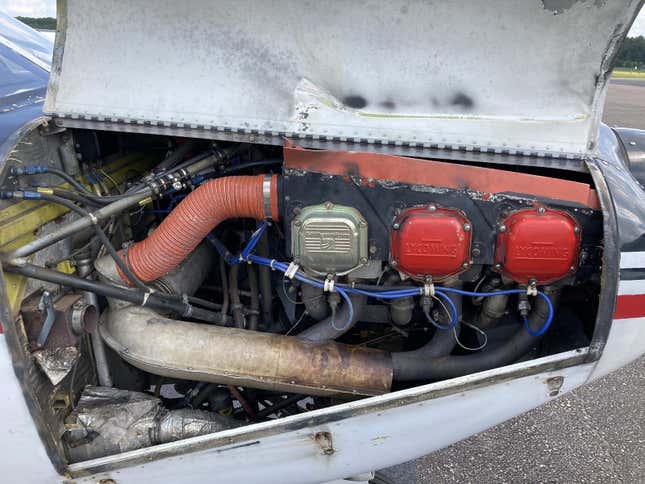
At cruise, the plane feels smooth with a good balance of stability and responsiveness. Light turbulence settles quickly and causes no noticeable lateral motions, plus the flat attitude gives a good forward field of view, and even a decent view of the ground in front of the wing.
Roll and pitch controls have good harmony, with a moderate force, and almost no rudder needed to coordinate turns. Roll response is moderately quick – nothing like an Extra 300 , but still fun and about as fast as you’d want in a non-aerobatic aircraft, lest you get excited and your passengers involuntarily redecorate the interior.
Think sports sedan, not track toy. The net effect is a sense of speed (helped by an airspeed indicator in MPH vice knots) that you never really get in something like a Cessna 182. You even get enough airflow through the circular cabin vents to finally cool off.
Leaving the power up in a shallow dive gets you 200 mph quickly, and even pulling the power to idle, you don’t want to plan on going down and slowing down simultaneously. Bringing the speed all the way back to a clean stall, you’ll get the stall horn first, then some definitely noticeable buffet, then the nose drop around 80 mph. Plenty of warning and nothing scary on the drop.
Once back in the landing pattern, the airspeed and gear and flap changes turn something that was a minor annoyance into a real issue: The pitch trim is a horizontal window crank above your head, like an old Volvo sunroof.
Whoever’s decision it was to make up-down changes a left-right crank must have either thought it was a great prank, or had almost no experience with airplanes. Or humans. This turns flying the pattern into an exercise in rubbing your head and patting your stomach simultaneously, and takes way too much mental energy, to the point where I just flew portions of the pattern out of trim.
Later versions had a more traditional up-down wheel located right below the throttle, but how the roof crank ever made it out of the factory is a mystery to me. Maybe focusing too heavily on which shade of chrome for the ash trays.
While you’re busy fighting one snake in the cockpit, you notice the nice airflow from earlier has nearly died off, and the smallish windows mean you lose sight of the runway turning downwind. The good news is the well-balanced controls are still there and the flaps and gear give enough drag to correct from moderately high or fast. Also, the landing gear is built tough.
Why is that last one particularly important today? Remember that nose-high attitude from the ground? Yeah, it didn’t go away while flying. Years of not flaring to land in the military may have eroded my ability to be particularly delicate while landing light airplanes, but I’ve got enough recent experience in them to usually avoid any major bouncing or negative comments from the other seats.
Not today. What I thought was a normal flare attitude resulted in bouncing the nosewheel, then the mains on the first try. Add power, go around, try again. Lower to the ground this time, flare a little too nose high, slightly overcorrect, hit the nose and mains simultaneously with a bit of a bounce.
“You may be slightly out of trim.” Thanks. The last two landings I managed to grease the main wheels down, but still got a bit of a bounce on the nose. Whatever. I’m sure there’s a way to get it right, but there’s a reason many owners pump up the main struts or install a smaller nosewheel to get a flatter attitude on the ground.
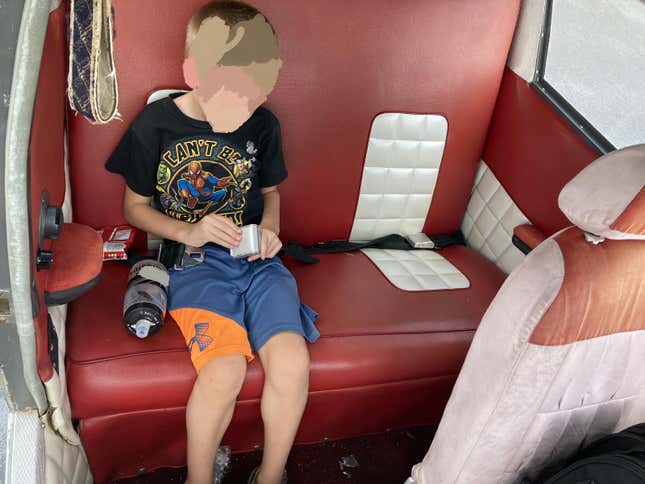
Prices for Comanches vary from about $35,000 for one with a higher time engine and older avionics to $110,000+ for updated C models. Getting into an airplane that hasn’t been built in nearly half a century seems a little daunting, but the airframes are very corrosion resistant, and parts availability isn’t too dire.
It’s also one of the most commonly modified airframes, with several “speed mods” and auxiliary fuel tanks available to push range up to nearly 900 nautical miles. The march of technology is slow in general aviation (a new $750,000 Bonanza has 300 HP and cruises around 170 knots), so you’re not giving up all that much performance by getting something old, just a bit of refinement.
My personal opinion? 90 percent of a flight is going to be gear retracted, moving quickly, and the Comanche 250 is a good balance of performance, space, and fun to fly for a fairly low price.
Just make sure it has a damn trim wheel. Maybe pump up the struts too.
- AVwebFlash Current Issue
- AVwebFlash Archives
- Aviation Consumer
- Aviation Safety
- IFR Refresher
- Business & Military
- eVTOLs/Urban Mobility
- Experimentals
- Spaceflight
- Unmanned Vehicles
- Who’s Who
- Video of the Week
- Adventure Flying
- AVWeb Classics
- CEO of the Cockpit
- Eye of Experience
- From The CFI
- Leading Edge
- Pelican’s Perch
- The Pilot’s Lounge
- Brainteasers
- Company Profile
- Question of the Week
- Reader Mail
- Short Final
- This Month In Aviation Consumer Magazine
- This Month In IFR Magazine
- Farnborough
- HAI Heli Expo
- Social Flight
- Sun ‘N Fun
- Women in Aviation
- Accidents/NTSB
- Aeromedical
- FAA and Regs
- Flight Planning
- Flight Schools
- Flight Tracking
- Flight Training
- Flight Universities
- Instrument Flight
- Learn to Fly
- Probable Cause
- Proficiency
- Risk Management
- Accessories and Consummables
- Aircraft Upgrades
- Equipment Reviews
- Maintenance
- Refurb of the Month
- The Savvy Aviator
- Tires/Brakes
- Used Aircraft Guide Digest
- Electronic Flight Bag
- Engine Monitors
- Portable Nav/Comm
- Specifications
- Register Now
- Customer Service
- Reset Password

- Sign up for AVweb Flash
- Read AVweb Flash
- Aviation Publications
- Contact AVweb
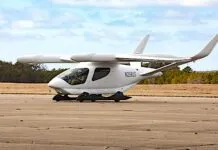
Beta Technologies Alia CTOL Impresses At Cape Cod Debut
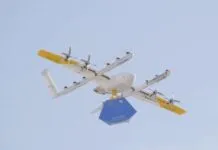
DoT Inspector General To Audit FAA Efforts On Drone Integration
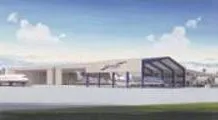
Signature Aviation And BETA Technologies Electrify East Coast Airports
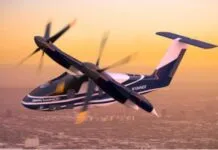
Sikorsky Takes New Hybrid VTOL Design Public
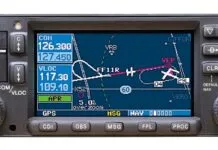
GNS 430 Hysteria-25 Years Later

Putting A Face To The Perils Of Space Flight
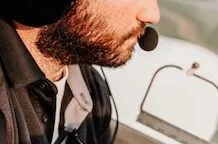
Yakkity Yak
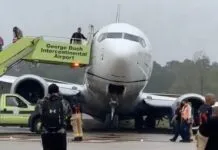
Self-Censorship Gets In The Way Of Reporting The News
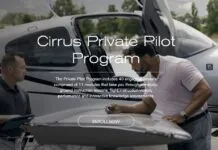
Blog: Cirrus’s Fresh Approach Represents A New Pathway To Piloting
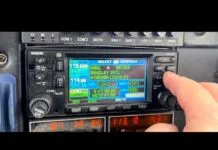
Video Of The Week: Garmin GNS 430: Throwaway Or Keeper?
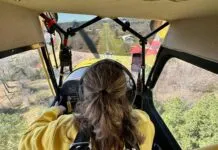
Picture Of The Week: March 22, 2024

Video Of The Week: Will There Be Smoke?
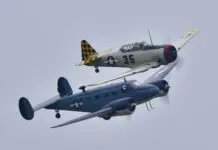
Picture Of The Week: March 15, 2024
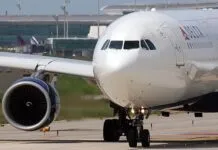
Delta Captain Celebrates Retirement With Chartered Airbus Flight To Hawaii
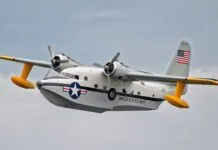
Short Final: Aircraft Identification
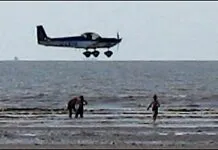
Short Final: Consider This
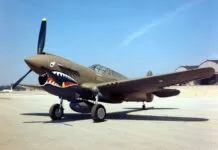
Short Final: Numbers Game

NTSB Releases Documents Behind Texas Warbirds Collision

Three Finalists Selected As Potential Air Races Host

Snowbirds Return To AirVenture
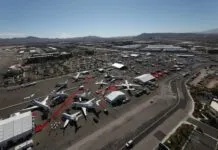
NBAA-BACE Wraps: Association Launches New Marketing Platform
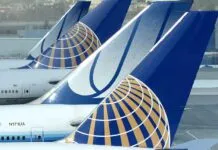
Spate Of Incidents Earns United More FAA Scrutiny

Alaska Airlines Flight 1282 Passengers Potentially Deemed Crime Victims

FAA Issues Domestic Notice On Eclipse’s Impact On Operations

‘Make A Good Airplane:’ Whitaker Discusses Boeing Future

FAA Readies For PAFI Unleaded Fuel Tests
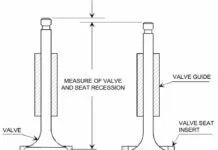
Mike Busch To Probe Unleaded Fuel Valve Issues
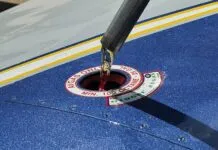
Environmental Group Says California FBOs Will Be Able To Continue Selling…
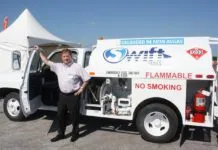
Swift Fuels Raps Environmentalists’ ‘Ultimatum’ On Unleaded Fuel
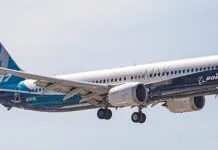
Booking Tool Allows Passengers To Opt Out Of Boeing 737 MAX…
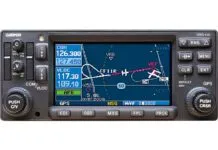
Garmin’s GNS 430/530 Sunset Takes Another Step

Honeywell Shores Up Supply Chain With Olathe Plant Expansion
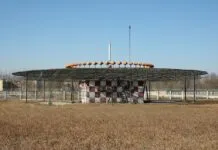
FAA Advises Using Analog NAVAIDS In Spoofing Areas
- features_old
Speed: Buying 180 Knots for $180,000
There's a good selection of reasonably priced, fast piston singles out there. just make sure maintenance is up to snuff before you buy..
Speed matters. Ask any pilot. Frustratingly, speed costs money and lots of speed, as the warbird set says, costs cubic money. In the single-engine piston world, we’d each love to blast across the sky over 230 knots in a Cessna TTX, yet for most, the exchequer doesn’t quite stretch to the nearly three-quarters of a million dollars needed to buy one.
In this day and aviation market age, a $180,000 purchase price isn’t out of line, especially if it’s split a few ways. Moving through the air at 180 knots is cooking along nicely, so in keeping with our general fascination with symmetrical numbers, we decided to create the 180 for 180 club and then find out what airplanes are qualified to join—those that have a real-life cruise speed of at least 180 knots and a Bluebook value of $180,000 or less.
It turns out that a nice selection of airplanes qualify for the club. Naturally, our research lead to a number of caveats—few of the airplanes in the speed and price range were built in this century, and every single one of them is of sophisticated design with complex systems, so a careful pre-buy carried out by a maintenance technician who knows the type of aircraft is essential if you are going to avoid purchasing yourself a financial nightmare.
Always keep in mind that if these airplanes were being manufactured today they would cost three-quarters-of-a-million bucks, so you are not maintaining a $180,000 airplane—you are maintaining a three-quarters-of-a-million dollar airplane.
We found that after-market mods turbocharging and turbonormalizing, boosted cruise speeds past the magic 180-knot mark for many airplanes, but often added enough market value to the airplane to push it past our limiting number.
One mod is simply too new to evaluate—putting a Continental TSIO-550 into a normally aspirated Cessna 210 easily raises its cruise speed above 180 knots, but the mod has not been around long enough to generate data on the change to the market value of the airplane.
Finally, we found that the consistent rule of thumb to determine how many people, with modest baggage, you could carry with full fuel, most of the speedsters was to take the number of seats installed and subtract two.
For decades Mooney had an unimpeachable rep for speed with modest horsepower—the airplanes went like crazy while sipping gas. Yet it wasn’t until the company decided that hanging big engines was okay that their airplanes crossed the 180-knot cruise threshold. The M20K 231 brought back turbocharging to the line after the company’s brief fling with it in the M22 Mustang—stay away, although that 1960s pressurized airplane can be bought for $57-$63,000 and cruises at 200 knots, maintenance issues and parts availability make it a nonstarter for an owner that doesn’t want a full-time project airplane.
The 231’s real-life cruise speed is about 170-175 knots, so it doesn’t make the cut here; however, in 1986 Mooney installed a slightly different, more efficient, intercooled engine of the same 210 HP, the TSIO-360-MB1, made a few more airframe tweaks and changed from a fixed wastegate to a density controlled, variable wastegate.
The payoff was a 10-knot cruise speed increase. Owners report 200 knots at FL210 while burning 11.5 GPH. With 75 gallons usable fuel aboard, range, with VFR reserves, can approach 1000 nm when cruising in the flight levels. Real life payload with full fuel is as low as 360 pounds and rarely more than 450 pounds.
The 1986-1990 252 series fell within our price range, Bluebook values run from a low of $125,000 to $165,000.
After the 252 went out of production, Mooney brought it back briefly as the Encore, bumping the horsepower to 220 and increasing the useful load by 200 pounds. Bluebook for the 1997 M20K Encore is $170,000, for the 1998, $180,000.
Two discontinued conversions by Rocket Engineering used the short-body Mooney airframe and turned a merely fast airplane into a screamer. The Mooney Missile is an M20J with a 300-HP IO-550-A up front. Cruise speed jumps to as high as 190 knots. The Mooney Rocket is an M20K with a 305 HP TSIO-520-NB engine and full-feathering prop. Cruise speed is as high as 220 knots in the high teens. While the Bluebook does not price these mods, we saw Rockets on the market recently with asking prices of $170,000.
One long-body Mooney met our parameters. The M20M TLS, with its turbocharged 270-HP engine cruises at 190-210 knots. Bluebook values range from $128,000 for a 1989 model through $168,000 for one built in 1995.
As with all Mooneys, watch for corrosion, particularly in the cabin frame tubes and for fuel leaks.
Even with but 185 HP, the original Bonanza demonstrated that it was speedy. In 1966, when Beech created the 285-HP V35TC, it put a 200-knot single into the sky. While Beech never, in our opinion, quite got the turbocharging right on any of its Bonanzas, the V35TC served notice that the 285-HP short-body Bonanzas, 33 and 35 series, especially the lighter weight ones, would really boogie at altitude if turbocharged. The production run for the turbocharged V35s was but four years and Bluebook prices values from $69,000 for a 1966 model to $85,000 for one from the 1970 model year.
For the long-body Bonanza, the 36 series, the turbocharged A36TC and B36TC cruise faster than 180 knots at altitude, and many fall within our price parameter. While cooling and fuel burn has been a chronic issue with these airplanes, making us cautious to recommend them, the 1979 A36TC at a Bluebook value of $130,000 through the 1984 B36TC at $175,000 will give you the ability to carry four plus baggage with full tanks at over 180 knots by climbing to the upper teens.
Because the Bonanza line has been the beneficiary of what might be considered a mother lode of modifications, a buyer with a need for speed and a budget should, in our opinion, look for a Bonanza that has the Tornado Alley Turbo turbonormalizing mod. This conversion is available for all IO-520- and IO-550-powered Bonanzas and provides sea-level horsepower up to 20,000 feet.
The mod currently costs just over $50,000, depending on additional work performed but, according to brokers we’ve spoken with, unlike $50,000 worth of glass panel installation, holds its value well on the used market. It is always cheaper to buy an airplane with the mods you want rather than paying to have them done, however, we heard numbers as high as $40,000 in market value bump for normally aspirated Bonanzas and Cirrus SR22s that had the turbonormalized mod.
A 1974 V35B Bonanza has a Bluebook value of $87,000. Turbonormalized, with a tip tank mod that boosts its gross weight from 3400 to 3600 pounds, it will carry 600 pounds in the cabin with 100 gallons of fuel aboard and fly 1000 nm at 200 knots with VFR reserves. Allowing the most optimistic market bump for the turbo mod and something for the tip tanks, the airplane still comes in under $180,000.
The long-body 36 line started in 1968 and is still in production. Bluebook value for a 1968 36 is $57,000. Turbonormalized, it will cruise at 185-190 knots. Assuming a $40,000 bump for turbonormalizing, and putting a $140,000 ceiling on Bluebook prices for the normally aspirated 36 series, everything up through the 1982 A36 at a value of $140,000 falls within our 180 for 180 envelope.
Cessna pioneered general aviation turbocharging in 1962 with the model 320 Skyknight. In 1966, it hung a 285-HP TSIO-520-C on the 210, creatingthe T210F, an airplane that had no published maximum operating altitude and would cruise at over 180 knots in the flight levels. Refinements, including going to a cantilevered wing the next year made the airplane faster. A 310-HP pressurized version was added to the line in 1978, the T210 having been bumped to that horsepower the previous year.
T210s are amazing load haulers, with the full 90 gallons on board, some could fill the six seats with 170-pounders and carry about 10 pounds of baggage. Realistically, the T210s will generally carry four or five adults and baggage with full fuel, the heavier P210s a little less. The 210 series has the longest CG range of any six-place single, so loading it out the aft end is not the issue frequently wrestled with Bonanzas and Piper Lance/Saratogas.
Solid instrument platforms, you can figure on crossing into the 180-knot cruise threshold at 18,000 feet and about 195 knots at FL250. Cessna 210 broker and guru Dan Howard, says he figures on 180 knots on 18 GPH at 18,000 feet in a T210 and adds one GPH for the P210 to keep up with the demands of the pressurization.
Howard recommends looking for an airplane that has had an intercooler added as it helps high and hot performance, engine longevity and adds about $3000 to the resale value.
The 32.5-gallon Flint tip tanks turn the T and P210 into a 1000-nm range airplane and, per owner comments, increase performance at altitude.
Although a $50,000 Bluebook value for a 1966 T210 looks attractive, making sure it’s in good shape before plunking down the purchase price is imperative. While the R model T and P210s have held their value so well that all were above our $180,000 max number, all of the other model T210s fell within the box, with the 1984 T210N coming in at $172,000.
The P210 is the only pressurized single that made our 180 for 180 cut—with a 1978 model valued at $137,000 and a 1982 at $177,000.
The market reacted to the 2001 introduction of the 310-HP, ballistic parachute-equipped Cirrus SR22 by buying them in quantity. Cruise speed pushed 180 knots rich of peak, but it wasn’t quite fast enough to meet our 180-knot minimum.
Since then Tornado Alley Turbo developed a turbo-normalizing kit for the SR22 that proved so effective the factory eventually installed it, with the turbo-normalized airplanes outselling the normally aspirated versions about two-to-one, which matched Cessna’s experience with the T210 and 210.
Cirrus eventually developed its own turbocharging system, with the SR22T. Both versions of the blown-engine SR22 easily cruise faster than 180 knots, some making 210 knots at FL230.
With 84 gallons aboard and a useful load of 1100 pounds, the SR22 carries a decent load—600 pounds in the cabin with full fuel isn’t bad in a four-place airplane.
The problem we ran into was pricing. For 2010 and more recent airplanes, the Bluebook recommends adding $85,000 to the value for turbocharging. It does not give an add on for prior years. At some $45,000 installed for the turbonormalizing mod, we can’t believe the resale value exceeds the cost of the conversion. Our conversations with brokers gave us resale values as high as $40,000 for turbonormalizing, although we think that is still too high for older SR22s.
Nevertheless, even allowing the full cost for the turbonormalizing mod, a potential owner could buy a 2001 or 2002 SR22, have the modification performed and still walk away with $5000 to $15,000 change from $180,000. There are some 950 turbonormalized SR22s in the field and while we didn’t see any listed for sale, we have to believe that some can be purchased below our $180,000 number.
The caveat is that those older airplanes are due for the ballistic parachute repack, a $10,000 bit of maintenance, watch the sale price accordingly.
Piper’s speedsters, the Malibu and Mirage, easily blow past our 180-knot admission ante, however, we couldn’t find any for $180,000. At the other side of the stadium, most of the Lance/Saratoga series, even the turbocharged versions, can be purchased for $180,000 or less, however, none of them have a real world cruise speed of 180 knots.
There is one Piper that is a member of the 180 for 180 club—the muscular PA-24-400 Comanche 400. Built in 1964 and 1965 because William Piper’s son, Pug, was convinced that turbocharging would never be viable for general aviation and the only way to get a lot of power at altitude was to start with a huge amount at sea level, Piper dropped a 400 HP Lycoming IO-720-A1A into a Comanche. Initially, the airplane had headaches galore, but determination and a dedicated owners group worked them out over the years.
If you want to whistle along at 185-195 knots while burning 20-22 GPH ROP, have some tolerance for taking care of a slightly offbeat airplane and desire attention when you taxi up to the ramp, Bluebook value ranges from $112,000 to $116,000 but notes that the “value of upgraded or restored models may be significantly higher.”
You want quirky and cool? Look at a turbocharged Bellanca Super Viking. Known as exceptionally tough, with a funky turbonormalizing system on a 300-HP Lycoming IO-540-K1ES, this sports car-handling machine will do 190 knots at FL200. With a tube and fabric structure, cramped interior and a 1000-pound useful load, it tends to be an airplane for aficionados and true believers in the marque.
Now orphaned, as its parent company changed hands and went broke a few times, a potential buyer has to go into a deal with eyes wide open for the airplanes are reputed to be a challenge to keep in good working order, engine cooling is not what it should be and the fabric covering means the airplane must be hangared.
Bluebook values range from $49,000 for a 1972 model to $66,000 for one from 1978. While superficially attractive, we can’t help but recall a friend’s comment when we looked at buying a late 1960s Alpha Romeo, “You’re getting all of the maintenance costs and headaches of a Ferrari without the initial price of admission.”
Once we got into the research, we were pleased to find that the 180 for 180 club was not nearly as exclusive as we’d imagined. Split three ways, for example, it’s a way to buy great speed for a reasonable price and have money left over to refurbish the interior and update some avionics.
If it were we, for a four-place airplane—recognizing that it’s a two-placer in real life—we’d first look for a turbonormalized, early model Cirrus SR22, or even consider buying one that had not been converted and having the mod done. A very close second would be a turbonormalized 35-series Bonanza with tip tanks, as it would be like being fitted with seven-league boots—we could easily make 1000 nm trips at 200 knots or better.
For a six-place airplane, we like the Cessna T or P210 series with aftermarket intercooling. While a turbonormalized Bonanza has a little better handling, the long CG and payload of the Cessna tips the scales. If our maintenance budget would allow it, the P210 would be at the top of the list as pressurization keeps the family much happier than nose bags and it has one of the quietest interiors of any single.
We’d stay away from the Comanche 400 or Bellanca Super Viking unless we held an A & P rating or truly liked to tinker and had a friendly mechanic to watch over us.
Rick Durden is a part owner of a Cessna T210, holds an ATP with type ratings in the Douglas DC-3 and Cessna Citation 500 series and is the author of The Thinking Pilot’s Flight Manual or, How to Survive Flying Little Airplanes and Have a Ball Doing It, Vol. I. Vol 2 is due out soon .
This article originally appeared in the February 2013 issue of Aviation Consumer magazine.
For more great content like this, subscribe to Aviation Consumer .
LEAVE A REPLY Cancel reply
Log in or Register to leave a comment
AVweb Insider
Featured video.
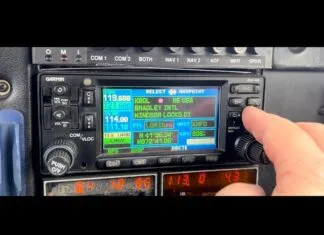
- Privacy Policy
- AIRCRAFT AVAILABLE
- AIRCRAFT SOLD
- AIRCRAFT WANTED
- Testimonials
- AIRCRAFT ACQUISITION
- AIRCRAFT FERRY
- IMPORTS AND EXPORTS
- Chicago, IL
- San Francisco, CA
Piper Comanche 180
Our inventory.
- ALL AVAILABLE
- Miscellaneous Items
- Corporate Jets
- Helicopters
- Multi-Engine
- Aircraft - Single Engine
- Light Sport
- Amphibian / Float
- Taildraggers
- Experimental
- Normal Category
- Partnerships
- Acquisitions
- Agricultural
- Airport Real Estate
Our Services
- ABOUT AirplanesUSA
- OUR MARKET COVERAGE
- TESTIMONIALS
Reference Items
- REFERENCE LINKS
- TERMS / CONDITIONS
See aircraft details below / Click any photo for slideshow.

1960 Piper Comanche 180:
Here is one real classy airplane that will make you PROUD to own and fly !!
This is a great opportunity to own an IFR / RNAV equipped Comanche 180 with a very low-time Mattituck engine as well as a low-time airframe. It sports a BEAUTIFUL new paint scheme and interior. Wow!
Once you see this airplane, you will fully appreciate it. We have flown this beauty and can report that the airplane is a delight to fly, roomy, and truly an eye-catcher at the airport - absolutely gorgeous!
Price has been reduced for a fast sale. So, don´t wait!
Call Manny at AirplanesUSA (954)359-6000.
Registration:
- Reg # N7098P - Ser # 24-2254
- 3250 TT Since new
Engine Specs:
- 265 SMOH (Mattituck) - Shadin Fuel Flo Indicator
Maintenance:
- Next annual due June, 2008 - New ELT battery - Undercarriage Gear motor and gear box rebuilt (2006) - Prop AD due Oct.´07 - New strut seals - No damage history - Aircraft has the original hand brake which can be modified to toe brakes.
Avionics/Radios:
- IFR certified - Audio Panel with marker beacons - King 197 com - Narco 12D TSO Digital Nav/Com with memory - Glideslope - King KNX-80 RNAV - Northstar M1 Loran - TXP150 w/encoder - Clock
Year Interior:
- New interior
Year Exterior:
- New all grip paint - One piece windshield
Aircraft Location:
- Aircraft‘s home base is in Mattituck, N.Y. - Currently located in Fort Pierce, Florida
Performance Info:
General info for a Piper PA-24-180 Comanche (Not aircraft specific):
Make: Piper
Model: PA-24-180
Horsepower: 180 HP
Top Speed: 145 Knots
Cruise: 139 Knots
Stall Speed (Dirty): 53 Knots
Fuel Capacity: 60 Gallons
Service Ceiling: 18500 Feet
Rate-Of-Climb: 910 FPM
Takeoff Ground Roll: 750 Feet
Takeoff Roll Over 50´: 2240 Feet
Landing Roll: 600 Feet
Landing Roll Over 50´: 1025 Feet
Gross Weight: 2550 Pounds
Empty Weight (lbs): 1530 Pounds
Range 730 NM
Call Manny at AirplanesUSA (954) 359-6000
- All info provided is believed to be accurate although not guaranteed. - Airframe and engine times may vary with normal aircraft utilization. - Always consult AIRPLANESUSA.COM for the latest detail, pricing, or photos available for this or any other aircraft in our inventory. - Do you have an airplane to sell or trade? We are just a phone call away! Call us.
Use the form below to inquire about this aircraft :
- Accessories
- Maintenance
- Used Aircraft Guide
- Industry News
- Free Newsletter
- Digital Issues
- Reset Password
- Customer Service
- Free Enewsletter
- Pay My Bill

Speed: Buying 180 Knots for $180,000
There’s a good selection of reasonably priced, fast piston singles out there. just make sure maintenance is up to snuff before you buy..
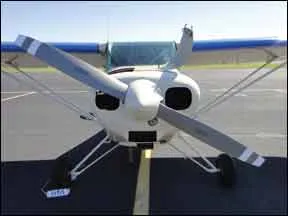
Speed matters. Ask any pilot. Frustratingly, speed costs money and lots of speed, as the warbird set says, costs cubic money. In the single-engine piston world, we’d each love to blast across the sky over 230 knots in a Cessna TTX, yet for most, the exchequer doesn’t quite stretch to the nearly three-quarters of a million dollars needed to buy one.
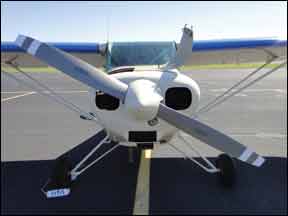
In this day and aviation market age, a $180,000 purchase price isn’t out of line, especially if it’s split a few ways. Moving through the air at 180 knots is cooking along nicely, so in keeping with our general fascination with symmetrical numbers, we decided to create the 180 for 180 club and then find out what airplanes are qualified to join—those that have a real-life cruise speed of at least 180 knots and a Bluebook value of $180,000 or less.
It turns out that a nice selection of airplanes qualify for the club. Naturally, our research lead to a number of caveats—few of the airplanes in the speed and price range were built in this century, and every single one of them is of sophisticated design with complex systems, so a careful pre-buy carried out by a maintenance technician who knows the type of aircraft is essential if you are going to avoid purchasing yourself a financial nightmare.
Always keep in mind that if these airplanes were being manufactured today they would cost three-quarters-of-a-million bucks, so you are not maintaining a $180,000 airplane—you are maintaining a three-quarters-of-a-million dollar airplane.
We found that after-market mods turbocharging and turbonormalizing, boosted cruise speeds past the magic 180-knot mark for many airplanes, but often added enough market value to the airplane to push it past our limiting number.
One mod is simply too new to evaluate—putting a Continental TSIO-550 into a normally aspirated Cessna 210 easily raises its cruise speed above 180 knots, but the mod has not been around long enough to generate data on the change to the market value of the airplane.
Finally, we found that the consistent rule of thumb to determine how many people, with modest baggage, you could carry with full fuel, most of the speedsters was to take the number of seats installed and subtract two.
Mooney For decades Mooney had an unimpeachable rep for speed with modest horsepower—the airplanes went like crazy while sipping gas. Yet it wasn’t until the company decided that hanging big engines was okay that their airplanes crossed the 180-knot cruise threshold. The M20K 231 brought back turbocharging to the line after the company’s brief fling with it in the M22 Mustang—stay away, although that 1960s pressurized airplane can be bought for $57-$63,000 and cruises at 200 knots, maintenance issues and parts availability make it a nonstarter for an owner that doesn’t want a full-time project airplane.
The 231’s real-life cruise speed is about 170-175 knots, so it doesn’t make the cut here; however, in 1986 Mooney installed a slightly different, more efficient, intercooled engine of the same 210 HP, the TSIO-360-MB1, made a few more airframe tweaks and changed from a fixed wastegate to a density controlled, variable wastegate.
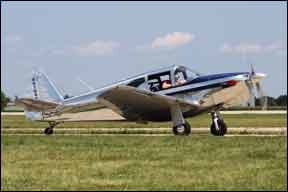
The payoff was a 10-knot cruise speed increase. Owners report 200 knots at FL210 while burning 11.5 GPH. With 75 gallons usable fuel aboard, range, with VFR reserves, can approach 1000 nm when cruising in the flight levels. Real life payload with full fuel is as low as 360 pounds and rarely more than 450 pounds. The 1986-1990 252 series fell within our price range, Bluebook values run from a low of $125,000 to $165,000.
After the 252 went out of production, Mooney brought it back briefly as the Encore, bumping the horsepower to 220 and increasing the useful load by 200 pounds. Bluebook for the 1997 M20K Encore is $170,000, for the 1998, $180,000.
Two discontinued conversions by Rocket Engineering used the short-body Mooney airframe and turned a merely fast airplane into a screamer. The Mooney Missile is an M20J with a 300-HP IO-550-A up front. Cruise speed jumps to as high as 190 knots. The Mooney Rocket is an M20K with a 305 HP TSIO-520-NB engine and full-feathering prop. Cruise speed is as high as 220 knots in the high teens. While the Bluebook does not price these mods, we saw Rockets on the market recently with asking prices of $170,000.
One long-body Mooney met our parameters. The M20M TLS, with its turbocharged 270-HP engine cruises at 190-210 knots. Bluebook values range from $128,000 for a 1989 model through $168,000 for one built in 1995.
As with all Mooneys, watch for corrosion, particularly in the cabin frame tubes and for fuel leaks.
Beechcraft Even with but 185 HP, the original Bonanza demonstrated that it was speedy. In 1966, when Beech created the 285-HP V35TC, it put a 200-knot single into the sky. While Beech never, in our opinion, quite got the turbocharging right on any of its Bonanzas, the V35TC served notice that the 285-HP short-body Bonanzas, 33 and 35 series, especially the lighter weight ones, would really boogie at altitude if turbocharged. The production run for the turbocharged V35s was but four years and Bluebook prices values from $69,000 for a 1966 model to $85,000 for one from the 1970 model year.
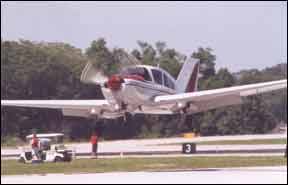
For the long-body Bonanza, the 36 series, the turbocharged A36TC and B36TC cruise faster than 180 knots at altitude, and many fall within our price parameter. While cooling and fuel burn has been a chronic issue with these airplanes, making us cautious to recommend them, the 1979 A36TC at a Bluebook value of $130,000 through the 1984 B36TC at $175,000 will give you the ability to carry four plus baggage with full tanks at over 180 knots by climbing to the upper teens.
Because the Bonanza line has been the beneficiary of what might be considered a mother lode of modifications, a buyer with a need for speed and a budget should, in our opinion, look for a Bonanza that has the Tornado Alley Turbo turbonormalizing mod. This conversion is available for all IO-520- and IO-550-powered Bonanzas and provides sea-level horsepower up to 20,000 feet.
The mod currently costs just over $50,000, depending on additional work performed but, according to brokers we’ve spoken with, unlike $50,000 worth of glass panel installation, holds its value well on the used market. It is always cheaper to buy an airplane with the mods you want rather than paying to have them done, however, we heard numbers as high as $40,000 in market value bump for normally aspirated Bonanzas and Cirrus SR22s that had the turbonormalized mod.
A 1974 V35B Bonanza has a Bluebook value of $87,000. Turbonormalized, with a tip tank mod that boosts its gross weight from 3400 to 3600 pounds, it will carry 600 pounds in the cabin with 100 gallons of fuel aboard and fly 1000 nm at 200 knots with VFR reserves. Allowing the most optimistic market bump for the turbo mod and something for the tip tanks, the airplane still comes in under $180,000.
The long-body 36 line started in 1968 and is still in production. Bluebook value for a 1968 36 is $57,000. Turbonormalized, it will cruise at 185-190 knots. Assuming a $40,000 bump for turbonormalizing, and putting a $140,000 ceiling on Bluebook prices for the normally aspirated 36 series, everything up through the 1982 A36 at a value of $140,000 falls within our 180 for 180 envelope.
Cessna Cessna pioneered general aviation turbocharging in 1962 with the model 320 Skyknight. In 1966, it hung a 285-HP TSIO-520-C on the 210, creating the T210F, an airplane that had no published maximum operating altitude and would cruise at over 180 knots in the flight levels. Refinements, including going to a cantilevered wing the next year made the airplane faster. A 310-HP pressurized version was added to the line in 1978, the T210 having been bumped to that horsepower the previous year.
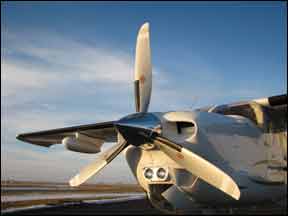
T210s are amazing load haulers, with the full 90 gallons on board, some could fill the six seats with 170-pounders and carry about 10 pounds of baggage. Realistically, the T210s will generally carry four or five adults and baggage with full fuel, the heavier P210s a little less. The 210 series has the longest CG range of any six-place single, so loading it out the aft end is not the issue frequently wrestled with Bonanzas and Piper Lance/Saratogas.
Solid instrument platforms, you can figure on crossing into the 180-knot cruise threshold at 18,000 feet and about 195 knots at FL250. Cessna 210 broker and guru Dan Howard, says he figures on 180 knots on 18 GPH at 18,000 feet in a T210 and adds one GPH for the P210 to keep up with the demands of the pressurization.
Howard recommends looking for an airplane that has had an intercooler added as it helps high and hot performance, engine longevity and adds about $3000 to the resale value.
The 32.5-gallon Flint tip tanks turn the T and P210 into a 1000-nm range airplane and, per owner comments, increase performance at altitude.
Although a $50,000 Bluebook value for a 1966 T210 looks attractive, making sure it’s in good shape before plunking down the purchase price is imperative. While the R model T and P210s have held their value so well that all were above our $180,000 max number, all of the other model T210s fell within the box, with the 1984 T210N coming in at $172,000.
The P210 is the only pressurized single that made our 180 for 180 cut—with a 1978 model valued at $137,000 and a 1982 at $177,000.
Cirrus The market reacted to the 2001 introduction of the 310-HP, ballistic parachute-equipped Cirrus SR22 by buying them in quantity. Cruise speed pushed 180 knots rich of peak, but it wasn’t quite fast enough to meet our 180-knot minimum.
Since then Tornado Alley Turbo developed a turbo-normalizing kit for the SR22 that proved so effective the factory eventually installed it, with the turbo-normalized airplanes outselling the normally aspirated versions about two-to-one, which matched Cessna’s experience with the T210 and 210.
Cirrus eventually developed its own turbocharging system, with the SR22T. Both versions of the blown-engine SR22 easily cruise faster than 180 knots, some making 210 knots at FL230.
With 84 gallons aboard and a useful load of 1100 pounds, the SR22 carries a decent load—600 pounds in the cabin with full fuel isn’t bad in a four-place airplane.
The problem we ran into was pricing. For 2010 and more recent airplanes, the Bluebook recommends adding $85,000 to the value for turbocharging. It does not give an add on for prior years. At some $45,000 installed for the turbonormalizing mod, we can’t believe the resale value exceeds the cost of the conversion. Our conversations with brokers gave us resale values as high as $40,000 for turbonormalizing, although we think that is still too high for older SR22s.
Nevertheless, even allowing the full cost for the turbonormalizing mod, a potential owner could buy a 2001 or 2002 SR22, have the modification performed and still walk away with $5000 to $15,000 change from $180,000. There are some 950 turbonormalized SR22s in the field and while we didn’t see any listed for sale, we have to believe that some can be purchased below our $180,000 number.
The caveat is that those older airplanes are due for the ballistic parachute repack, a $10,000 bit of maintenance, watch the sale price accordingly.
Piper Piper’s speedsters, the Malibu and Mirage, easily blow past our 180-knot admission ante, however, we couldn’t find any for $180,000. At the other side of the stadium, most of the Lance/Saratoga series, even the turbocharged versions, can be purchased for $180,000 or less, however, none of them have a real world cruise speed of 180 knots.
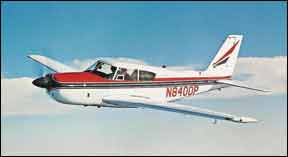
There is one Piper that is a member of the 180 for 180 club—the muscular PA-24-400 Comanche 400. Built in 1964 and 1965 because William Piper’s son, Pug, was convinced that turbocharging would never be viable for general aviation and the only way to get a lot of power at altitude was to start with a huge amount at sea level, Piper dropped a 400 HP Lycoming IO-720-A1A into a Comanche. Initially, the airplane had headaches galore, but determination and a dedicated owners group worked them out over the years.
If you want to whistle along at 185-195 knots while burning 20-22 GPH ROP, have some tolerance for taking care of a slightly offbeat airplane and desire attention when you taxi up to the ramp, Bluebook value ranges from $112,000 to $116,000 but notes that the “value of upgraded or restored models may be significantly higher.”
Bellanca You want quirky and cool? Look at a turbocharged Bellanca Super Viking. Known as exceptionally tough, with a funky turbonormalizing system on a 300-HP Lycoming IO-540-K1ES, this sports car-handling machine will do 190 knots at FL200. With a tube and fabric structure, cramped interior and a 1000-pound useful load, it tends to be an airplane for aficionados and true believers in the marque.
Now orphaned, as its parent company changed hands and went broke a few times, a potential buyer has to go into a deal with eyes wide open for the airplanes are reputed to be a challenge to keep in good working order, engine cooling is not what it should be and the fabric covering means the airplane must be hangared.
Bluebook values range from $49,000 for a 1972 model to $66,000 for one from 1978. While superficially attractive, we can’t help but recall a friend’s comment when we looked at buying a late 1960s Alpha Romeo, “You’re getting all of the maintenance costs and headaches of a Ferrari without the initial price of admission.”
Conclusion Once we got into the research, we were pleased to find that the 180 for 180 club was not nearly as exclusive as we’d imagined. Split three ways, for example, it’s a way to buy great speed for a reasonable price and have money left over to refurbish the interior and update some avionics.
If it were we, for a four-place airplane—recognizing that it’s a two-placer in real life—we’d first look for a turbonormalized, early model Cirrus SR22, or even consider buying one that had not been converted and having the mod done. A very close second would be a turbonormalized 35-series Bonanza with tip tanks, as it would be like being fitted with seven-league boots—we could easily make 1000 nm trips at 200 knots or better.
For a six-place airplane, we like the Cessna T or P210 series with aftermarket intercooling. While a turbonormalized Bonanza has a little better handling, the long CG and payload of the Cessna tips the scales. If our maintenance budget would allow it, the P210 would be at the top of the list as pressurization keeps the family much happier than nose bags and it has one of the quietest interiors of any single.
We’d stay away from the Comanche 400 or Bellanca Super Viking unless we held an A & P rating or truly liked to tinker and had a friendly mechanic to watch over us.
RELATED ARTICLES MORE FROM AUTHOR
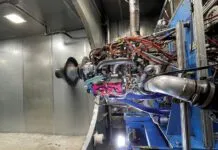
DeltaHawk Update: Two New Jet-A Variants
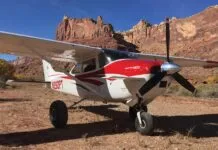
Four-Place STOL: Look Beyond Macho
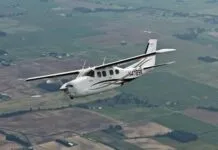
Cessna Pressurized 210
Featured video.
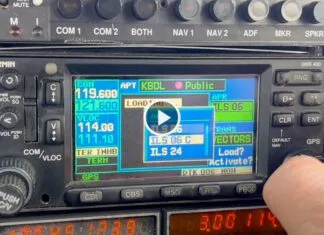
Garmin GNS 430: Throwaway or Keeper?
- Online Account Activation
- Privacy Policy
- Aircraft For Sale

IMAGES
VIDEO
COMMENTS
The 180 came with a carbureted 180-horsepower Lycoming O-360 engine, had a 140-kt cruise speed, and went out the door for $18,000 or so. The Comanche 250 was its big brother. Its 250-hp Lycoming O-540 engine gave this airplane a 20-kt advantage over the 180, and yet the 250's average-equipped price was only $4,000 more.
The early Comanche 180 had a 180-horsepower Lycoming O-360 engine and a 140 knot cruise speed. The Comanche 250, when it was produced, only cost a little more, but its 250 hp Lycoming O-540 engine meant that its cruise speed increased to 160 knots.
Cruising Speed (75% Power, Sea Level, MPH) ___.__ 150 171 Optimum Cruising Speed (75% Power, Optimum Alt.) _____ A0 181 ... The Comanche Model 180 is equipped with a Lycoming 0-360- A series engine rated at 180 HP at 2700 RPM. The engine in the 250 is a Lycoming 0-540-A series, developing 250 HP at 2575 RPM. ...
The PA-24-180 Comanche seats up to 3 passengers plus 1 pilot. Toggle navigation. Marketplace . Pro Buyer Program; Pro Seller Program; Buyer's Navigation; Seller's Navigation ... 1 x 180 HP. Best Cruise Speed: 139 KIAS. Best Range (i): 800 NM. Fuel Burn @ 75%: 10.0 GPH. Stall Speed: 52 KIAS. Rate of climb: 910 FPM. Ceiling: 21,000 FT. Takeoff ...
In 1958, Piper introduced a 250 hp (190 kW) version using a Lycoming O-540 engine, giving the PA-24-250 Comanche a top cruise speed of 160 kn (180 mph; 300 km/h). Most 250s had carbureted Lycoming O-540-AIA5 engines, but a small number were fitted out with fuel-injected versions of the same engine. ... Cruise speed: 185 mph (298 km/h, 161 kn ...
The Comanche 180 has less than stellar performance. Burning 8 to 10 GPH, it will cruise at about 140 knots. An American General Tiger, with the same horsepower and fixed gear, goes just as fast. Compared to a more contemporary and similar aircraft, the Mooney M20, the Comanche is quite slow: down about 20 knots. ... The cruise speed did not ...
Comanche 180 Base/used Price: $36,000 Engine make/model: Lyc. O-360-A1A Horsepower@altitude: 180@SL Horsepower for takeoff: 180 TBO hrs.: 2000 Fuel type: 80/87 Propeller type/diameter: Hartzell CS … Read More "Comanche 180"
Home > Aircraft Specs > Manufacturers > Piper Aircraft > PA-24-180 Comanche Performance Information. Piper PA-24-180 Comanche - Performance Data. Horsepower: 180: Gross Weight: 2550 lbs: Top Speed: 145 kts: Empty Weight: 1530 lbs: Cruise Speed: 139 kts: Fuel Capacity: 60 gal: Stall Speed (dirty): 53 kts: Range: 730 nm: Takeoff: Landing: Ground ...
PA-24-C 260. PA-24 Comanche pilot report. Piper PA-24-180 Comanche performance and specifications. Horsepower: 180. Gross Weight: 2550 lbs. Top Speed: 145 kts. Empty Weight: 1530 lbs. Cruise Speed: 139 kts.
The Comanche 180 was introduced in 1957, and the PA-24-250, the 250 HP version, followed soon after in 1958. Piper then skipped directly to the 400 HP PA-24-400 in 1964, ... Maximum Cruise Speed: 160 kts (296.3 kmh) Rate of Climb: 1,500 fpm (457.2 m/min) Take Off Roll: 660 ft (201.1 m) Take Off Roll (over 50ft obstacle) 1,040 ft (317 m) Landing ...
A stock 180 in good condition will typically outrun an Arrow, carrying the same load on 20 less horsepower—a 75 percent cruise of 140-plus ktas on 10 gph or so. Applying all the possible speed mods has brought the cruise speed of a Comanche 180 to over 150 ktas and close to that of a Cirrus SR20, the latter of which has the benefit of ...
As has been highlighted already, cruise speed is not the inflection point on the power discussion, imo. Power changes speed at the power of the cube root of the increase, once you move everything around to solve for the new speed. ... The good thing about the 180 HP Comanche is it has a constant speed prop. That means it will accelerate better ...
What the 180-HP Comanche lacks for cruise speed it certainly makes up for with endurance. It'll burn 8 to 10 GPH and cruise at 140 knots. For comparison, an American. General Tiger with fixed gear goes just as fast and another contemporary retractable, the Mooney M20C or M20E, will outrun the 180. The Comanche 180 can climb at 700 to 900 FPM ...
The Comanche 180 has less-than-stellar speed but long legs for its class. Burning 8 to 10 GPH, it will cruise at about 140 knots. ... It will cruise at 16,000 feet at over 170 knots true airspeed and burn about 14 GPH. Or, you can stay at 9000 feet, burn roughly 21 GPH and cruise at 200 knots true airspeed. The 400 Comanche carries 130 gallons ...
The Comanche PA-24-180 produced by Piper. Specs, range, speed, operating weights and performance for the Comanche PA-24-180 here. Comanche PA-24-180 manufactured by Piper. Specs, range, speed, operating weights and performance for the Comanche PA-24-180 here ... Max Speed: 161 kts; Normal Cruise: 145 kts; Economy Cruise: 139 kts; Power Plant ...
5.8 gph, Using a 180-hp Comanche this time, he got an average cruise speed of 127 mph on an economy power setting. When helanded, still had enough fuel for 10 more hours of flight. In 1966 Sheila Scott, an English pi lot, earned the Harmon Trophy by flying a Comanche around the world. Indeed, the aviation community lost AOPA PILOT· 83
In 1958, Piper introduced a 250 hp (190 kW) version using a Lycoming O-540 engine, giving the PA-24-250 Comanche a top cruise speed of 160 kn (180 mph; 300 km/h). Most 250s had carbureted Lycoming O-540-AIA5 engines, but a small number were fitted out with fuel-injected versions of the same engine.
By 1956, Beech's fork-tailed sensation had 225 HP and a claimed cruise speed of over 180 mph. Like a sports car for the skies, it was known for its nimble and satisfying handling, build quality ...
Cruise speed pushed 180 knots rich of peak, but it wasn't quite fast enough to meet our 180-knot minimum. ... There is one Piper that is a member of the 180 for 180 club—the muscular PA-24-400 Comanche 400. Built in 1964 and 1965 because William Piper's son, Pug, was convinced that turbocharging would never be viable for general aviation ...
General info for a Piper PA-24-180 Comanche (Not aircraft specific): Make: Piper. Model: PA-24-180. Horsepower: 180 HP. Top Speed: 145 Knots. Cruise: 139 Knots. Stall Speed (Dirty): 53 Knots. Fuel Capacity: 60 Gallons. Service Ceiling: 18500 Feet. Rate-Of-Climb: 910 FPM. Takeoff Ground Roll: 750 Feet. Takeoff Roll Over 50´: 2240 Feet. Landing ...
Cruise speed/fuel burn on Comanche 180 Common issues with new Comanche 180/250 owners Things to look for specific to the Comanche 180/250 Things to look for specific to the Arrow 180 Anything else worth looking at that I've missed Thank's everyone! Archived post. New comments cannot be posted and votes cannot be cast.
Comanches come in a variety of flavors, ranging from the 180-horsepower "baby" Comanche to the 400-horsepower 400. The Comanche 250 was the biggest seller of the line and was considered a strong competitor to the Beech Bonanza—performing almost as well but selling for thousands less. ... The 260's Lycoming IO-540 engine could cruise at ...
Cruise speed pushed 180 knots rich of peak, but it wasn't quite fast enough to meet our 180-knot minimum. ... There is one Piper that is a member of the 180 for 180 club—the muscular PA-24-400 Comanche 400. Built in 1964 and 1965 because William Piper's son, Pug, was convinced that turbocharging would never be viable for general aviation ...